James Funfer's Blog, page 2
September 5, 2016
The Eternal City, Top to Bottom
Rome was, in a word, intense.
Getting through the train station, Roma Termini, was eye-opening. North America doesn’t match Europe for train networks. I counted between 25 and 30 rails (~15 platforms) in Roma Termini, and the massive clusters of people let me know right away that I was in a busy city. Roma Termini was probably the size of a small airport.
It was a very short walk to the hostel from the train station, but it took a while to check in and get settled since I was staying at a very busy, party-atmosphere hostel (bit of a mistake, in hindsight).
With the afternoon free, I walked about half an hour to a place that my cousin, Father Stan Galvon (who did his seminary in Rome) recommended: the Basilica di San Clemente.
The walk was enlightening. teaching me a lot about both the beauty and the chaos that is Rome. Traffic, to locals, must certainly follow a logical pattern of some kind, but I couldn’t puzzle it out. Tourists are everywhere, but so are locals…it’s a big, busy, beautiful place. It isn’t hard to fathom why Rome is referred to as the ‘Eternal City’. Where else can you see gargantuan Roman ruins next to medieval fortifications, in the same piazza as a stolen Egyptian obelisk (older than the Colosseum), Baroque palaces and modern shops? Maybe a few places, but this is where you’ll find it concentrated. Rome gives you a continual sense of time travel (if you ignore the Vespas rushing by), and the Basilica di San Clemente encapsulated this feeling perfectly.
The walk to the basilica took me right next to the Colosseum and the ruins of the Roman forum, so I took the opportunity to snap some photos:
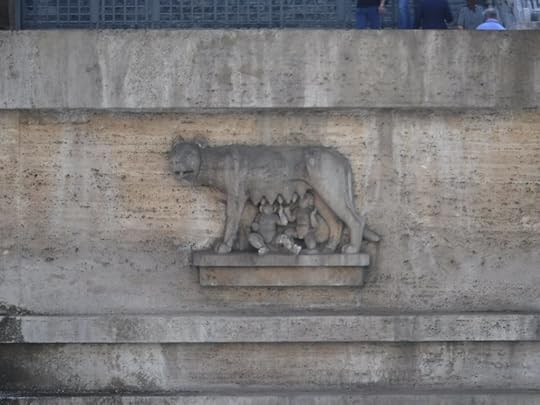
Romulus and Remus (and mum)
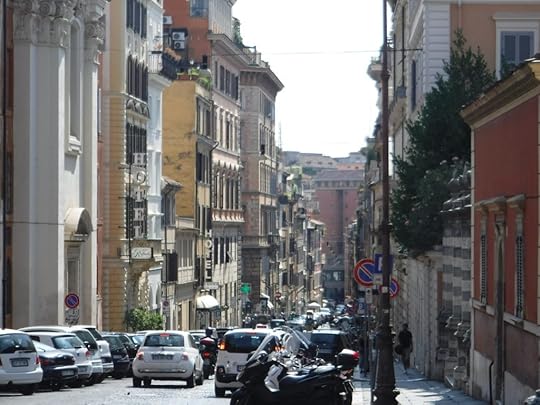
Inspiration for Corti Street
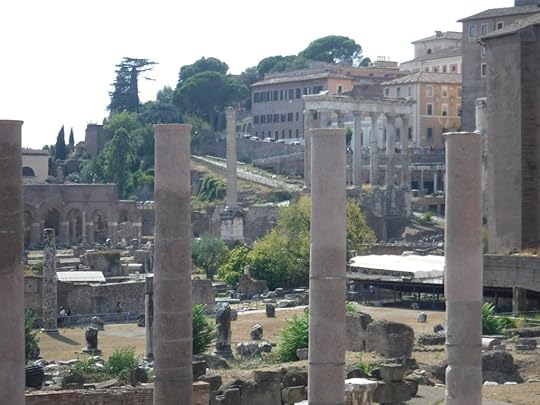
The forum ruins
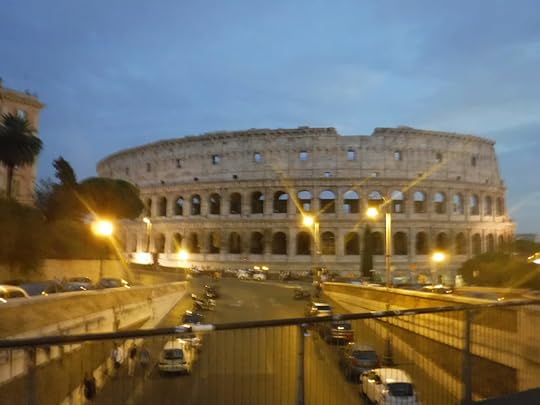
The Colosseum at dusk
The basilica is a 14th-century church restored in the 18th century, as beautiful and soothing as most cathedrals I’ve visited. Like most, it is still a place of worship. No photography of any kind was allowed within the Basilica (I’ll post pictures from online instead) due to the sensitivity of the ancient frescoes contained within, which the church is in the process of restoring. The frescoes and other precious artifacts were discovered underneath the basilica. Like Prague, the foundations of modern Rome are built upon the bones of its former self, and the discovery of the older 4th-century basilica directly underneath the modern church led to the excavations.
Paying the fee, I took the steps down to the underground, where Byzantine-style frescoes in various states of restoration were featured upon the ancient brick walls. It is known to be the largest collection of early medieval wall paintings in the entire city. The basilica also contains the tomb of St. Cyril, an important figure to Slavic Christians, and one fresco features, in writing, an early example of the Roman shift from Latin to the more vernacular Italian.
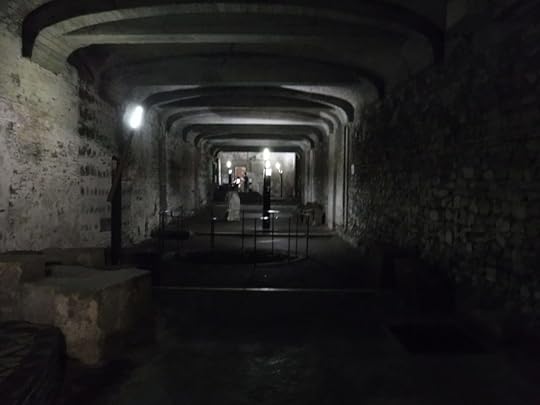
The underground basilica

Early Christian fresco
Underneath this important example of early Christian worship, however, survives something even older: a Mithraic temple from the 1st century. Converted from a nobleman’s home, the artifacts contained within this site of pagan worship (Mithraism was considered an early rival cult with Christianity) were truly ancient, including a shrine to Mithras and a bust of the god Sol. Other areas of excavation include a natural spring, a Mithraic school, and an area which may have possibly been the Roman mint. Feeling the 2000-year-old bricks of the walls, I felt as though I was truly among the ancient Romans, even if just for a moment.
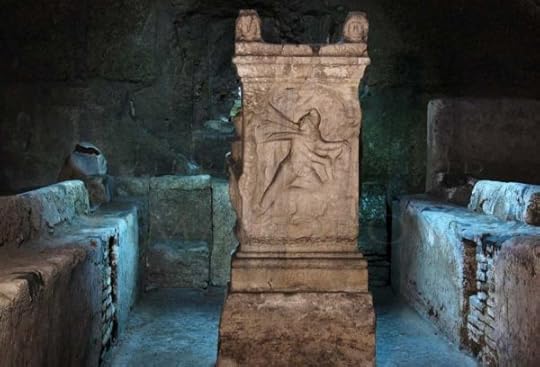
A shrine to Mithras
I lunched at a cafe and met two girls from Lebanon, Sarah and Joelle. Sarah has been studying art in Rome for two years and speaks fluent Italian. Joelle was visiting and had the opportunity to see several events surrounding St. Rita of Cascia (important to Lebanese Christians) and the canonization of Mother Theresa (happening this Sunday — I saw nuns everywhere). The girls suggested I join them on their free walking tour (you still tip the tour guide, of course!) on the following day.
The walking tour gave me the opportunity to see innumerable Roman landmarks that I may have otherwise missed. In Rome, even the free tour guides are required to have a degree – ours was an archaeologist, I believe – so the information you’re getting is the good stuff. On the tour, I saw the Spanish Steps, Trevi Fountain, Egyptian obelisks, the Pantheon, and St. Peter’s Basilica (though I opted not to step inside the Vatican — dehydration and staying up too late were taking their toll).
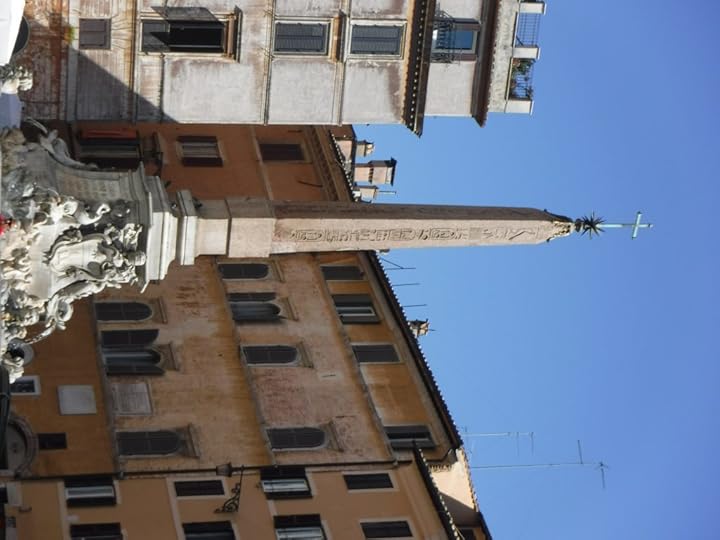
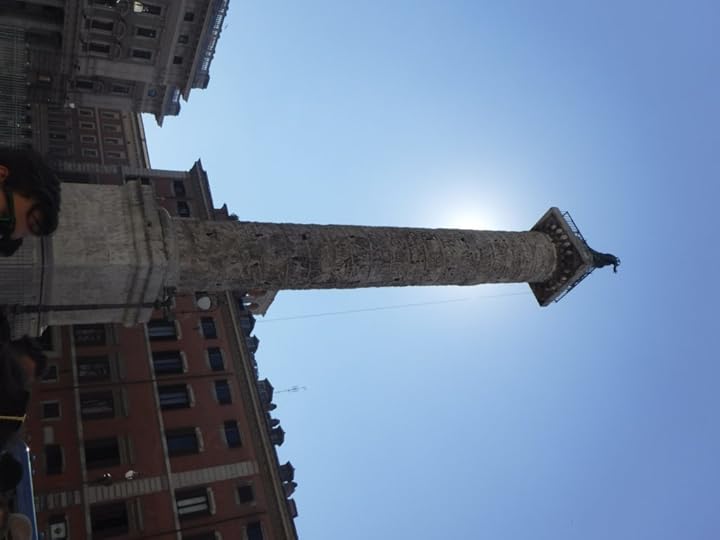
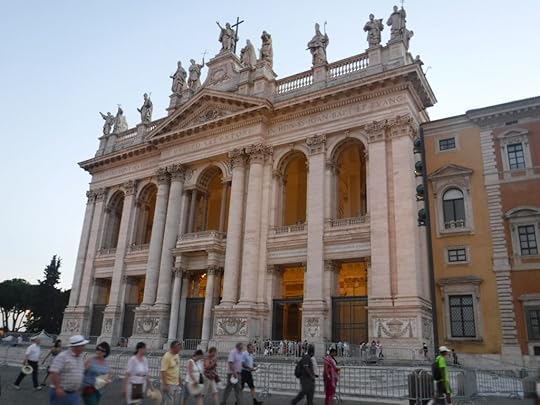

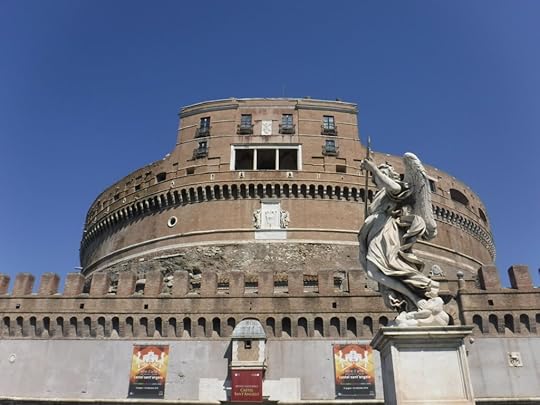

Don’t let the ‘free’ part fool you — the information was valuable.
Since she knew the best local places, Sarah took us to her favourite lunch spot, where I had some buffalo mozzarella that changed my life (or, at least, my opinion on what constitutes good and fresh as far as cheese is concerned).
Up next: Cinque Terre (for me it was only Duo Terre)
September 1, 2016
Ahh, Venice
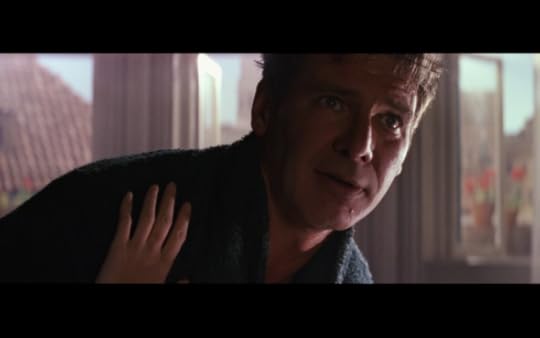
Ahh, Venice
My desire to see the legendary city of merchants and Marco Polo comes from my childhood. One of the ultimate expressions of humanity’s defiance of the natural world, the opulent lagoon city was brought to me by the romance and adventure of Indiana Jones and the music of Vivaldi (a regular occurrence in my household growing up).
There was a series produced a while back called Classical Kids, which depicted famous classical composers through the vignette of a story set to music. Usually the composer was not the narrator or central character of the story, but featured in some way. In Vivaldi’s Ring of Mystery, the story centres around an orphaned girl who is sent to study at the Conservatorio dell’Ospedale della Pietà. The tale describes Venice beautifully but accessibly, and it spurred my young imagination. No wonder it was my first stop in Italy.

Apart from the style of watercraft, St. Mark’s Square still looks like this today
I tried to imagine Renaissance Venice as we approached in the Vaporetti (sea bus), picturing an open-air sailboat instead of a noisy vessel packed with tourists. Vivaldi’s Four Seasons in my headphones enhanced the experience. The Vaporetti is not a direct approach; stops are made to the other local islands such as Murano and Lido.
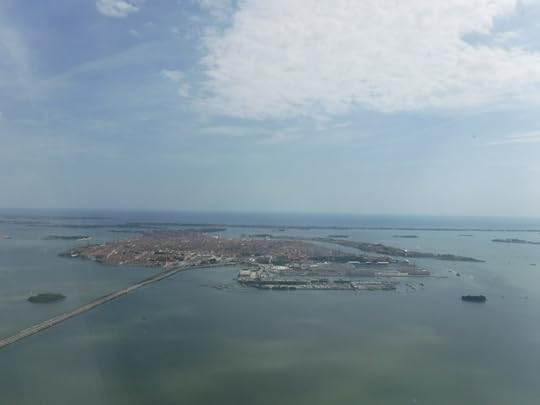
Venice from the air
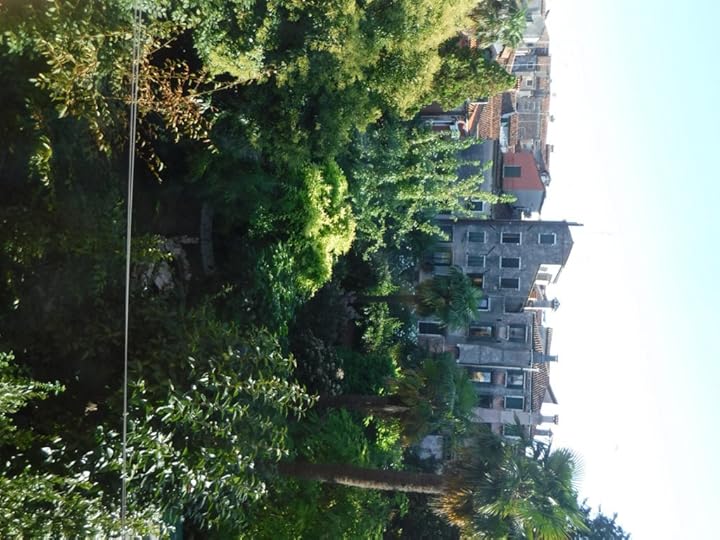
The view from my hostel – a rare look at Venetian green space
Venice has a confusing network of canals navigated by overpriced Gondolieri and private speedboats, but it also has firm streets. These winding, often narrow corridors are a combination of tourist traps, small church squares, restaurants, and, off the beaten path, places that cater to locals. Cicchetti (Italian tapas), fish/fruit markets and specialty stores abound if you wander away from the main thoroughfares. One such cicchetti spot was my first stop after dropping off my backpack in the hostel, and I dined on some incredible local cuisine: tuna crocchetta, fresh octopus, zucchini parmiggiano, and sardines on polenta cakes.

Gondolieri with tourists in a smaller canal
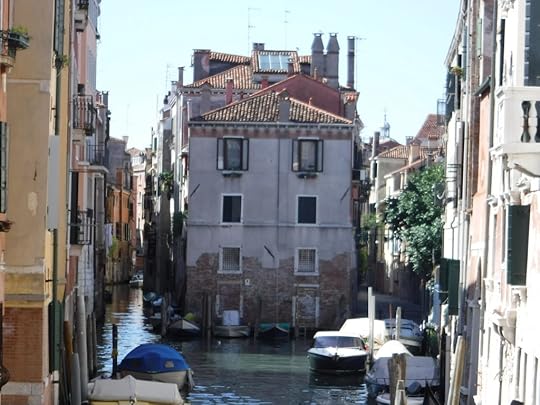
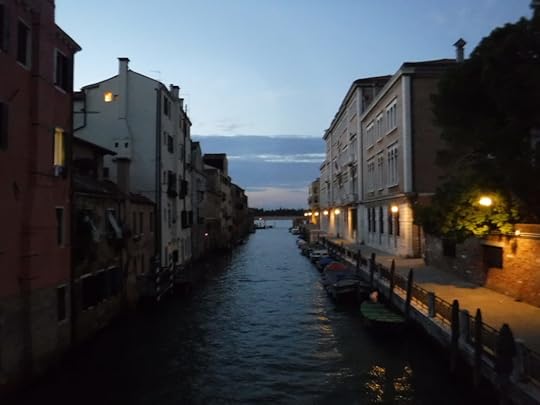
A wider canal in the evening
Later, I discovered a local craft beer pub called Il Santo Bevitore, again mostly populated by locals. Venice doesn’t have a big craft beer scene; most of the brews came from Central Europe and Ireland, but it was an excellent spot to meet people. I talked the night away with Alessandro, a 52-year-old waterworks administrator, and learned quite a bit about future engineering plans for saving Venice from potential (inevitable) rising sea levels.
The following day I decided to take in some of the sights, despite the sea of tourists plodding mere feet above the actual sea. St. Mark’s square, the Grand Canal and Bridge of Sighs were breathtaking, but I was struck more by the beauty of working Venice: clothes drying on ancient railings above the narrow street, locals chit-chatting outside shops, and Venetian children playing tag, squealing with laughter.
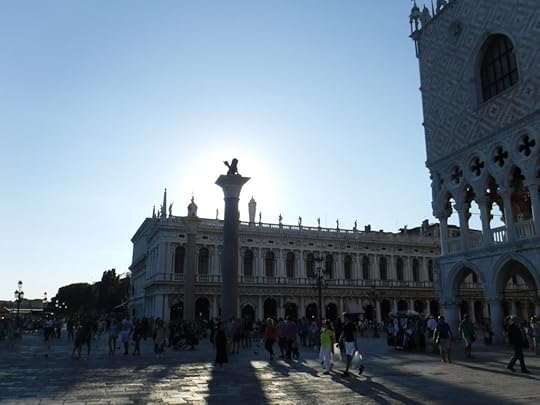
St. Mark’s, with the sun hiding behind the lion pillar

My journey for the day took me to the cemetery, which has its own island. Under French occupation, it was decreed that cemeteries within the city were unsanitary, and so the Isola di San Michele to the north became designated as the new one. Sadly, I forgot to look for Stravinsky’s grave.
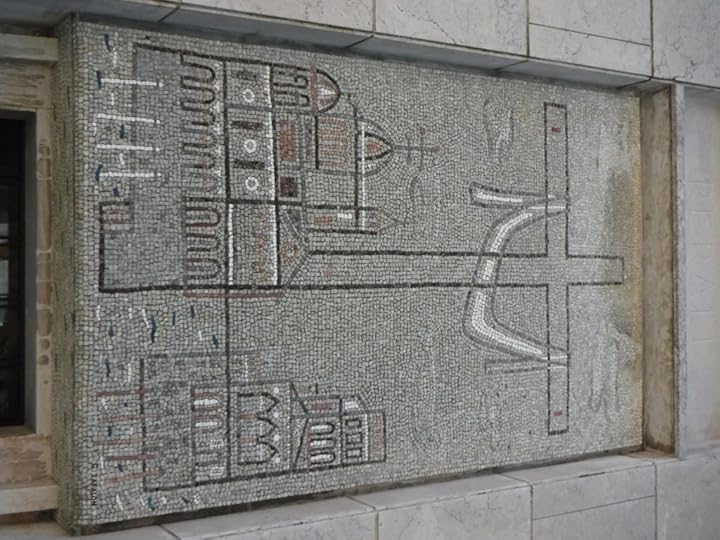
A mausoleum mosaic in the cemetery
A few hundred metres north of the cemetery is the island of Murano, which is known for its glass blowing. The masterpiece displays are a feast for the eyes, and it’s arguably the best (and cheapest) place in the world to get beautiful, hand-blown glass jewellery.
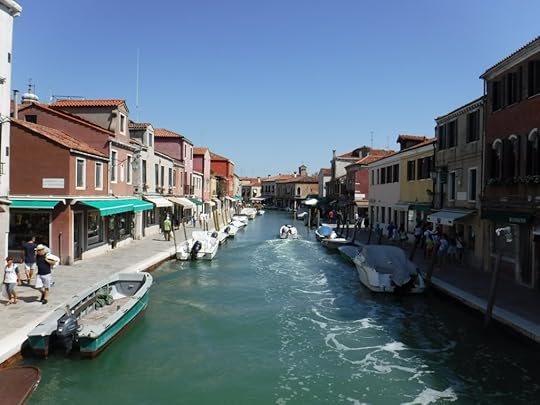
Murano, city of glass
Pro tip: let your credit card company know before you leave on vacation that you’ll be abroad. I rectified the rookie mistake with a phone call, but you’d think a credit union employee would know better.
I treated myself to a nice dinner at a spot the hostel owner recommended (steps away from the hostel itself), and wasn’t disappointed: hand-made local gnocchi and a very affordable bottle of verdicchio. I was so inspired by the unique beauty of Venice that I began to write some content for the third book in my Shattered Crystal series.
Vivaldi’s Venice still lives in the singing gondolieri and opulent architecture, but it’s truly alive in the back streets, where famiglia and laughter reign.
Up next: Rome
August 31, 2016
Party Prague
When you travel with a loose itinerary, you learn to expect the unexpected. Prague was a wonderful example of this.
Spišské Podhradie to Prague’s Vaclav Havel airport was around seven hours by car. I dropped off the rental and took the metro system to downtown Prague: bus to subway to hostel.
Downtown Prague is a feast for the senses. For every historic building you can find in a smaller Czech town, Prague will have ten. Beautiful bridges criss-cross the river at five-minute walking intervals. Four historic medieval towns have melded into one gorgeous, historic-but-youthful city of relaxed tourism, vibrant night life, and east-meets-west (Europe) culture.
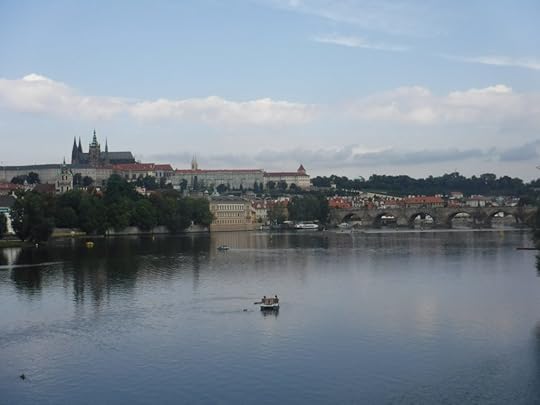
The view of the castle from the bridge
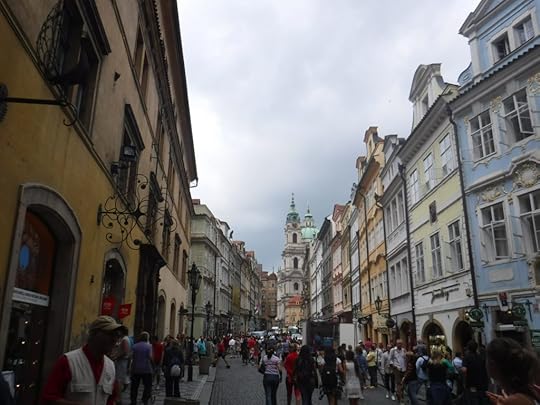
My hostel occupied most of a baroque-style downtown building. The largest yet that I’ve stayed at, Hostel Downtown is a perfect microcosm of Prague itself. Street-style art is painted on the walls, freedom of expression is encouraged on certain ‘graffiti’ areas, and the staff and hostel guests gather for breakfasts and dinners — sometimes thirty or more people at a time.
The river Vltava was an easy five-minute walk from my hostel, and I spent my first evening in the company of new friends, enjoying beer, conversation, and people-watching.
Prague is old enough to be a city-upon-a-city. As is the case with some medieval towns, buildings were “filled in” in order to raise the city’s level above the usual flood line of the river. The river walk, however, is at the old medieval town level, providing a sense of romance and seclusion.
The following morning, I opted to take the free walking tour offered by Mirek, one of the hostel staff. Mirek is also a local, so we were treated to more of a ‘secret people’s history’ of Prague. This included a visit to an underground restaurant (while the original town was buried to raise the flood line, many of the original buildings still exist) and details about the history of protestantism in the Czech Republic. Illuminati symbols are embedded within the architecture and statues of Prague, and Mirek pointed out masonic signatures on the stones of medieval buildings.
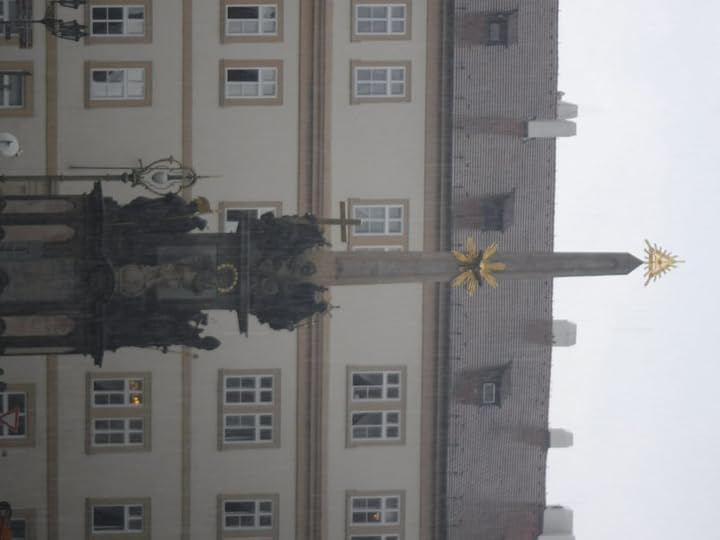
Illuminati symbol atop a monument
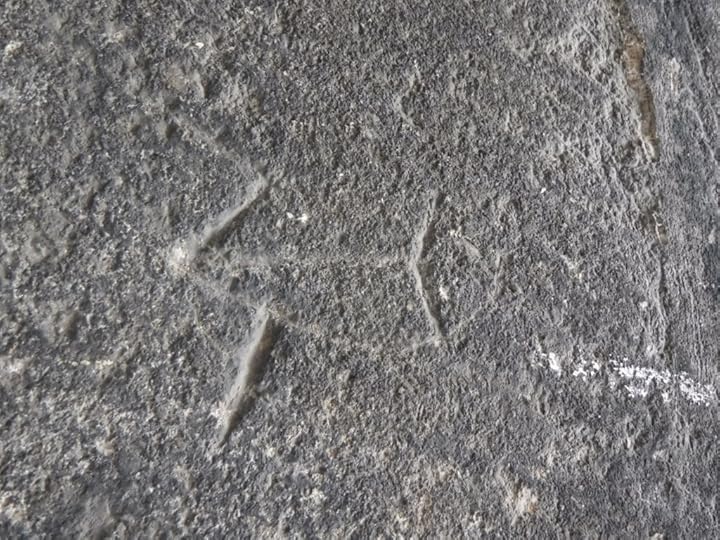
Masonic signature
There is a heavy ‘punk’ contingent in Prague; young Praguers are often irreverent and outspoken, and many seem to have found their voice in the artistic statements of David Černý: his works include babies with barcodes for faces and a fountain featuring statues of two men peeing into a map of the Czech Republic.
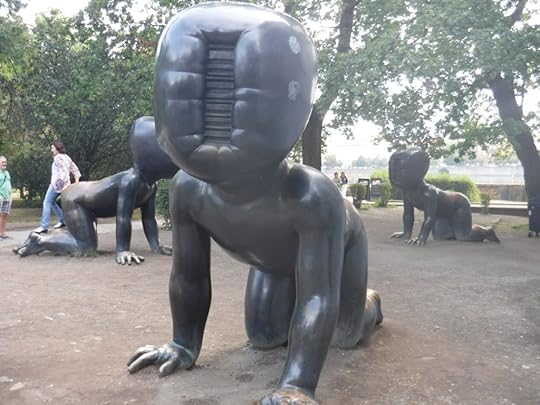
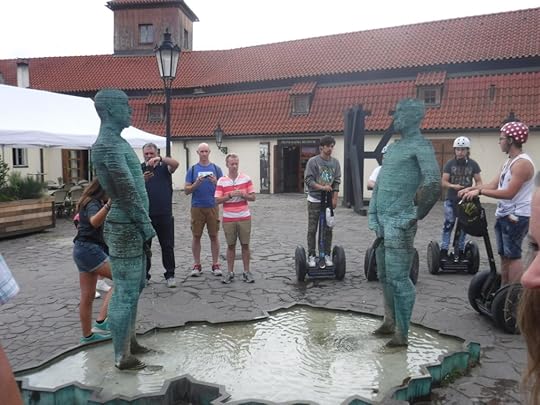
We also visited the Lennon Wall, made famous when a Czech artist painted John Lennon’s tombstone after his murder in 1980. Now, anyone is welcome to paint art or messages upon the wall. There are layers upon layers, and Mirek told us that the wall changes daily. Most written messages are about love and peace.
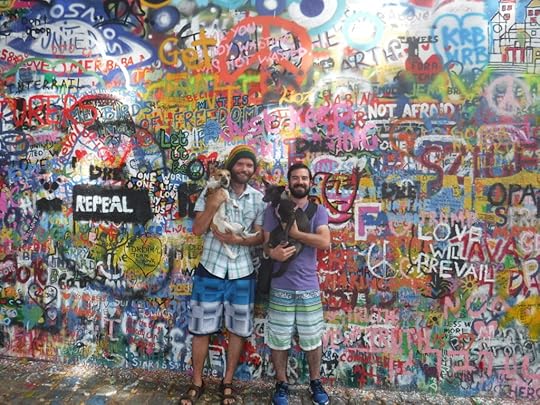
Myself, Mirek, and his doggies
At the castle gates, a man and a woman from an independent newspaper were handing out leaflets apologizing for their president’s decision to heighten security around the presidential offices. According to Mirek, President Miloš Zeman is not well-liked amongst young people and is seen as a panderer to Russia and China. In what I have come to understand as a typical Czech response to an unpopular decision, a group of Praguers climbed the castle one night and replaced the Czech flag with a giant pair of Chinese flag underwear.
We did not enter the castle itself (you can spend an entire day there, from what I understand), but I did get some excellent shots of the cathedral’s exterior, including the artful gargoyle-drainspouts vomiting water when we were caught in an unexpected torrential downpour.
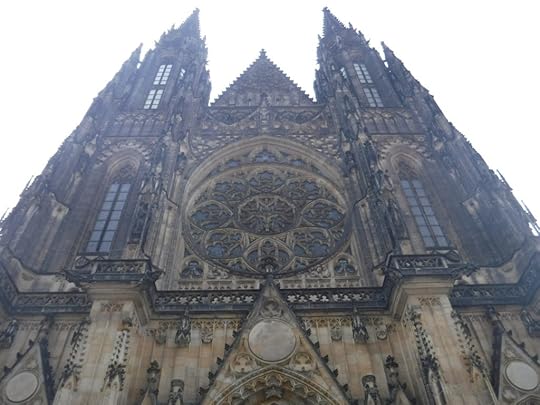
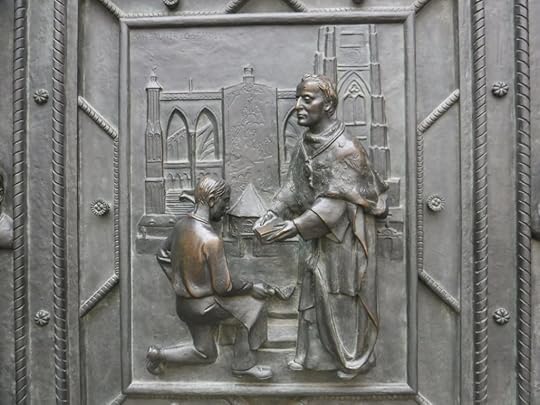
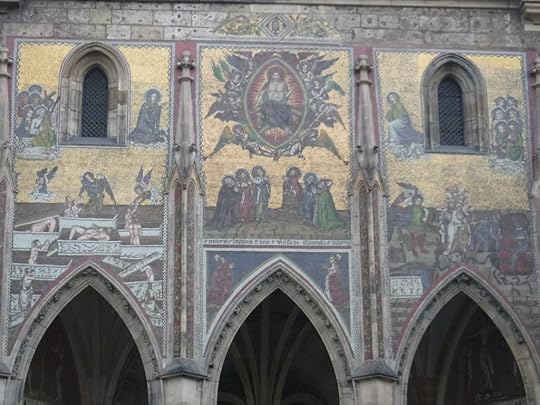
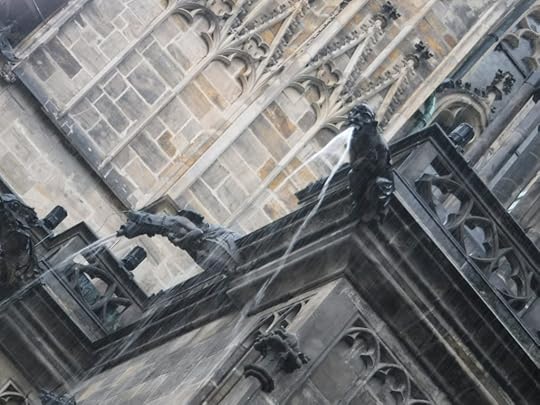
My one regret with regards to Prague is that I didn’t correctly plan my trip around viewing Alfons Mucha’s Slav Epic. The cycle of paintings, his magnum opus, are a series of 20 mural-sized depictions of Slavic history. The national gallery, which houses the paintings, is closed on Mondays. I have seen it as a sign that I must return someday to the city of Prague.
Instead, I visited the small museum dedicated to Mucha. Within, I watched a short biography (in English) about him, and snapped a few pictures of the Art Nouveau visionary’s works (until I was told that photography was not allowed). Mucha was so important to Czech culture that they asked him to design everything: movie posters, advertisements, art galleries, furniture, the national bank notes, and even stained glass windows (the stained glass window picture is not mine but I wanted to include it, because it encapsulates the scope and beauty of his work — I also included a pic of part of the Slav epic, so you can empathize with my regret at not having gone to the National Gallery).
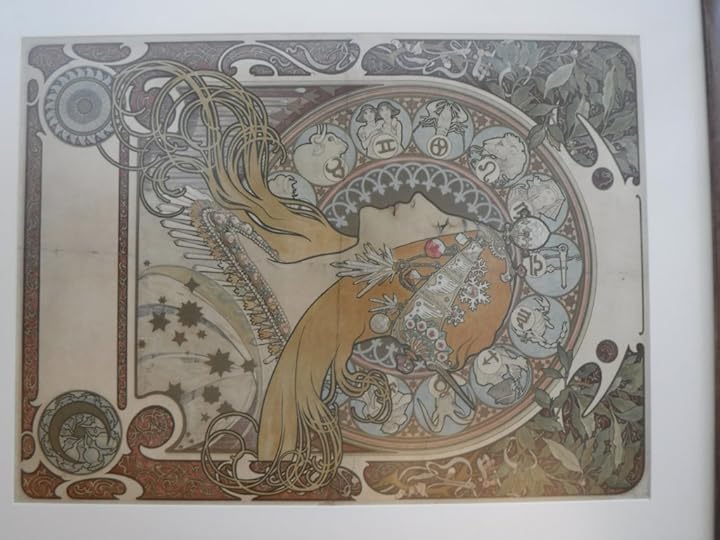

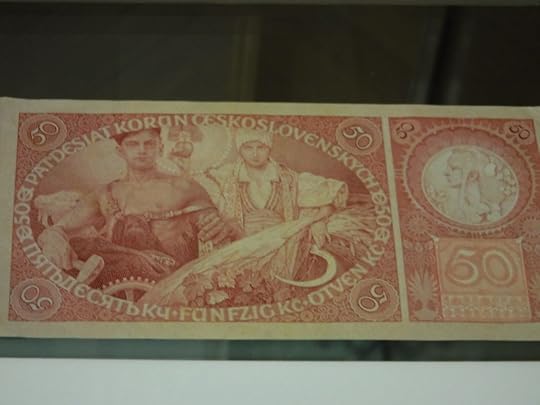
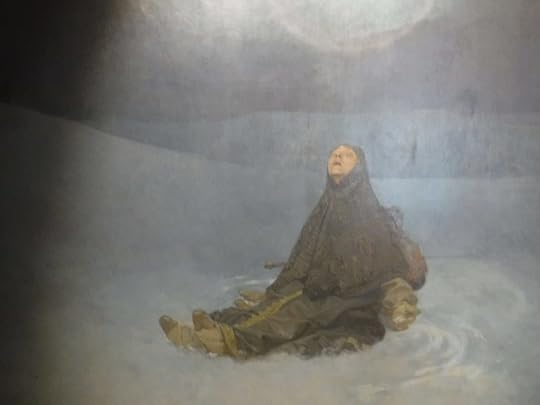
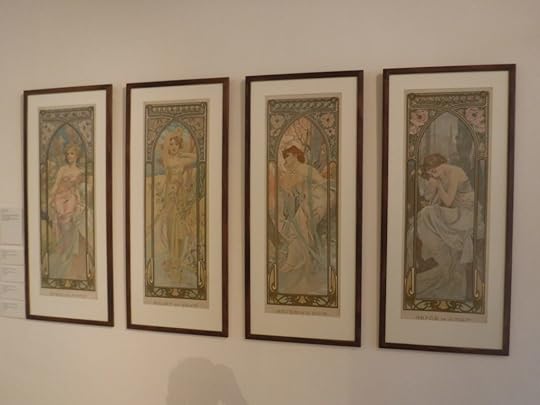
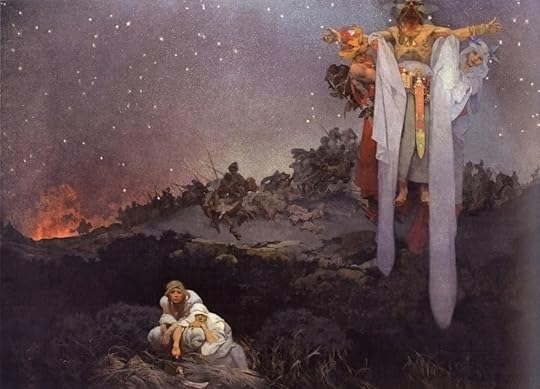
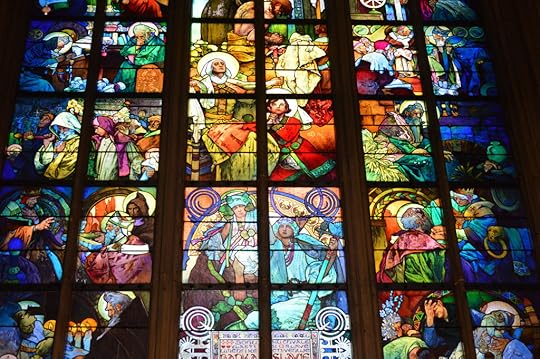
The evening’s events led to my final unexpected delight in Prague. The music bar just down the street from the hostel is an open-mic style venue. One of the bands that evening, Sunrise Kingdom, had a romantic tale worthy of an indie film: three guys working on a cruise ship decide to start a band and play a whirlwind tour of Europe. Bluesy and full of heart, playing a blend of their own songs and contemporary hits such as Crazy, they brought the house down.
Party on, Prague. Party on.
Up next: Venice
August 30, 2016
Villages and Fortresses
From Terchová I travelled further east, toward the birthplaces of my grandparents: the villages of Zábiedovo and Vitanová. While I had been hoping to bump into a long-lost relative, I was rewarded with a different kind of existential experience: a glimpse into the beauty of rural Slovakian life.

A map of the region, in Vitanová

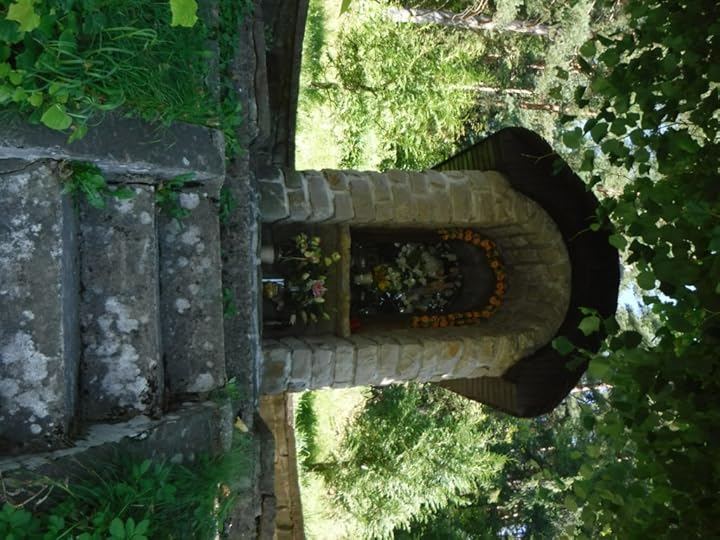
A travel shrine outside Zábiedovo

Row houses in Zábiedovo
This was not a tourist area in the least, and I received more than a few suspicious looks from locals as I snapped pictures. An attempt at conversation in Zábiedovo’s grocery store was challenging.
Life in these farming villages is idyllic: rows of brightly painted houses amongst the foothills of the Tatras Mountains. While the GDP of Slovakia is about $15k lower than Canada, I saw very little evidence of poverty in the smaller towns; a different story than when my great-grandparents left Slovakia in the 1930s. This can be partly explained by the fact that the cost of living is lower here than where I live — beer is cheaper than bottled water, for example.
My hotel for the night was booked fairly last-minute, but I was not disappointed in the least. For $60 CDN, I stayed at the beautiful spa hotel of Oravský Háj. While I did not partake in any of the spa services, it was a blessed retreat, complete with local folk musicians playing during dinner (which only cost me 20 euros, including dessert and brandy).
The following day I drove east to one of my big-ticket destinations of my journey: the medieval castle of Spišský hrad.
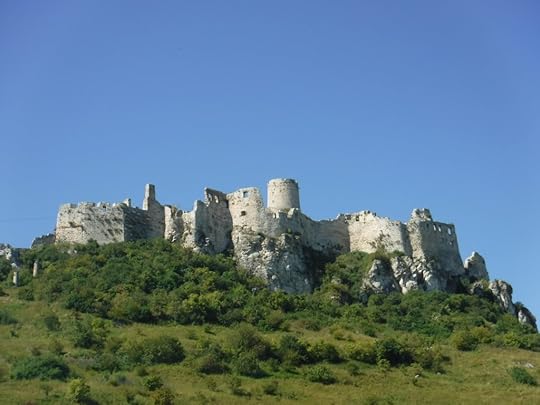
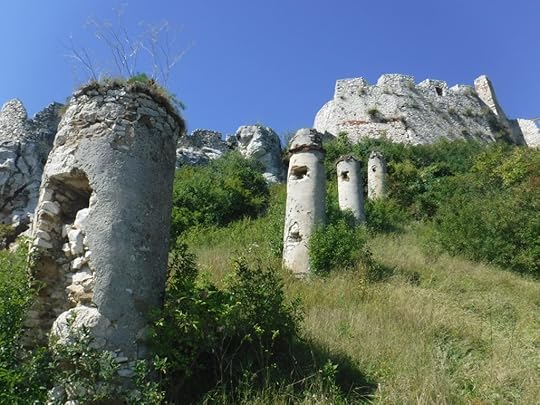
The hike up to the castle in the heat was intense (doubly so because I had forgotten my headphones in the car for the audio tour and had to go back down and up the hill) but it was well worth the hike and the 6 euro entry fee. Spišský hrad is an immense fortress at over 4 hectares in size, and was an important defensive position in the region since Roman times, when the local Celts occupied the area.
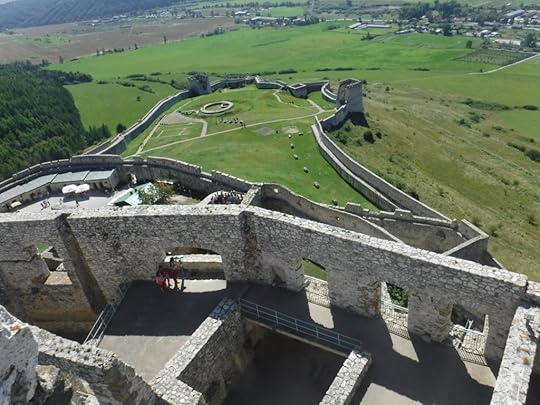
View of the middle and lower baileys from the tower
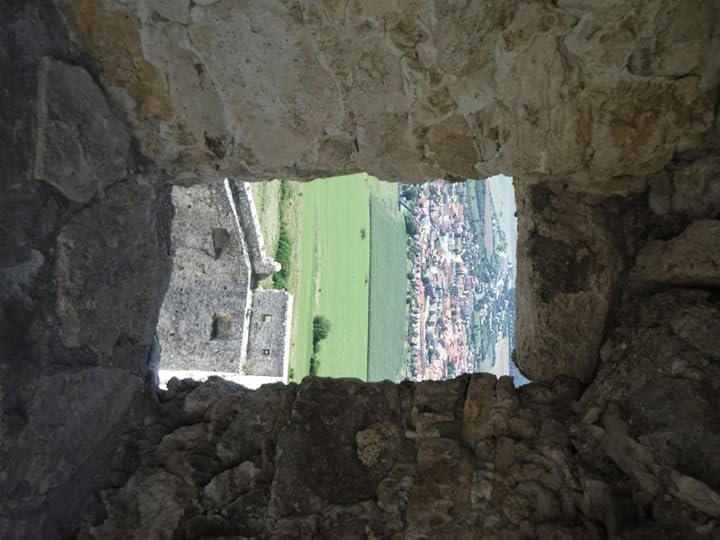
I could write about the castle’s history all day, but I’ll just give some highlights. The castle is very popular with both Slovakian tourists and others (I met people from Holland and Japan there) and even during busy times, the castle grounds are so large that it never feels crowded. You can see every part of the castle, except for a few areas which are under restoration (the castle’s gunpowder storage exploded in the 18th century and the entire fortress was consumed by fire, which is why the structure is now gutted).
Although the re-enactment shows were in Slovak, they were still quite entertaining, and the sword fights were well-choreographed.
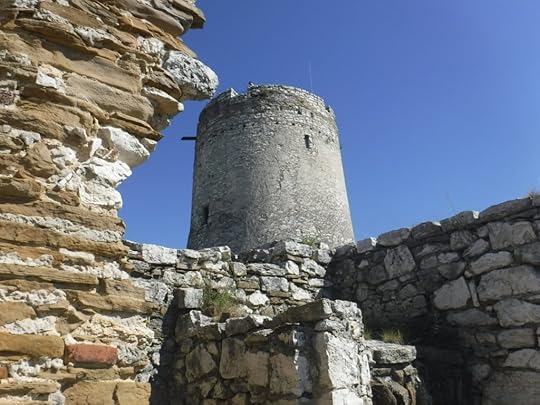
The tower

The Romanesque palace
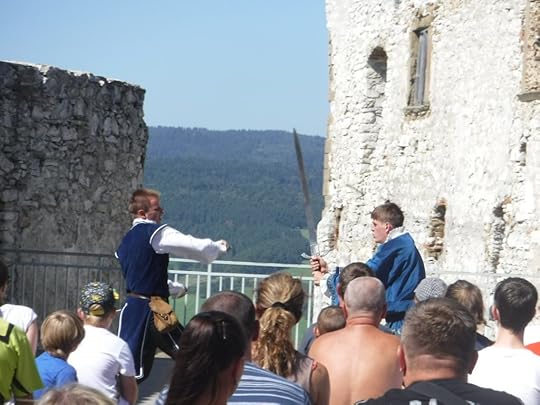
A re-enactment in the upper fortress
I learned a great deal about the history of the castle and the region, especially from the stories included in the audio tour. My favourite was a tale about a 13th-century Tatar princess who was captured by the lord of Spiš and fell in love with him.
The view from the tower was the best I’ve had yet on my trip — you could see all the way to the High Tatras in the distance (though smaller than the Rocky Mountains, they are striking because they shoot up like a row of teeth — I wasn’t able to snap a good photo of them from the car, for driving reasons).
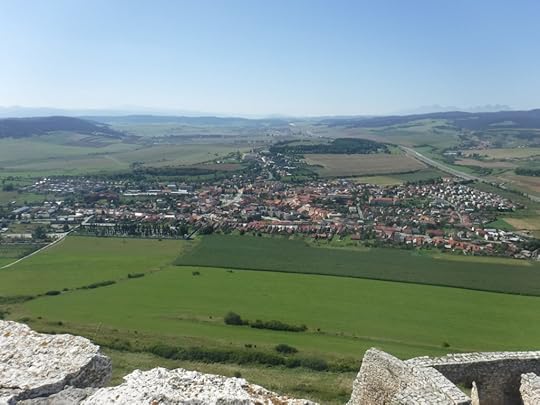
The view from the tower
The museum within the upper castle was small but well-designed and informative, with exhibits about the history of the castle and region, local artifacts, and everyday medieval life. The highlight for me was learning about the system of natural caves beneath the castle, where the body of a third-century merchant was discovered. He was carrying bags of silver coins minted with the profiles of Roman emperors such as Hadrian.
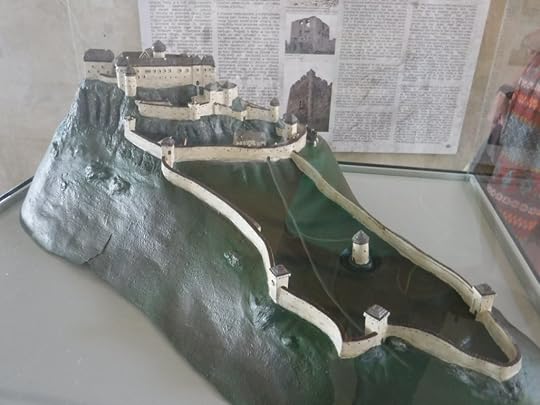
A model of the castle (before the fire)
Hostels are hard to come by in the smaller villages, but Penzion-style accommodations are common. I had a newly renovated private room with a shared kitchen, but the highlight of this hotel was the perfect, unobstructed view of the castle at night:
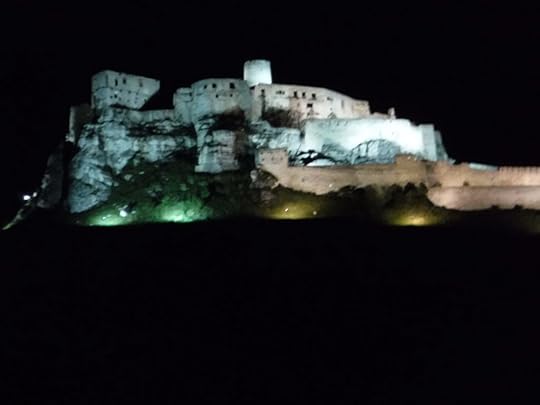
To the stars, Bowen…
The final photo is blurry because I befriended locals who were staying at the hotel: Dominik and Lilly. Slovakian hospitality is a bottle of vodka passed around.
Tomorrow: Party Prague
August 26, 2016
Getaways and Legends
In spite of my original plan to visit downtown Bratislava, I was feeling rather run-down from getting a mere four hours of sleep in a hostel. I opted instead to get out of dodge, book a private room last-minute and head out early on my journey northward.
My first stop was Čachtický hrad, a ruined castle about an hour north of Bratislava.
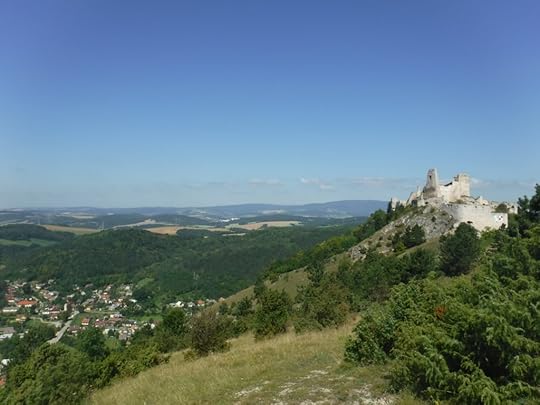
The castle overlooking the town
Although the castle is just a shell now, it still attracts many locals and nearby tourists, and includes an informative exhibit about the history of the castle and its occupants. The guided tours were only offered in Slovak, however, so I made do with the Spanish translation on a sheet of paper.
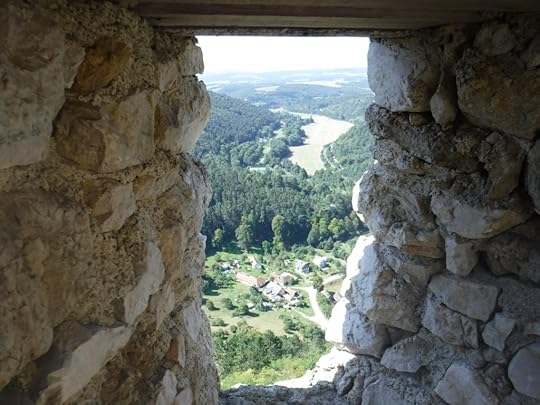
Archer’s window
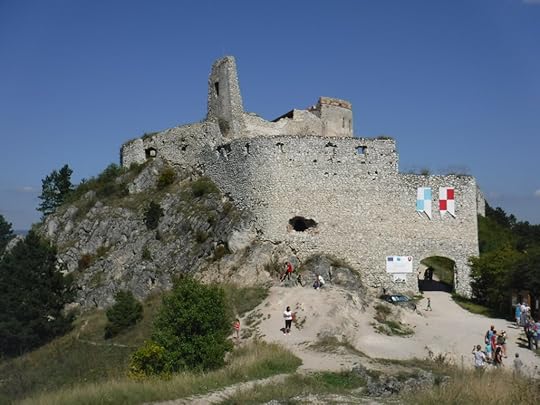
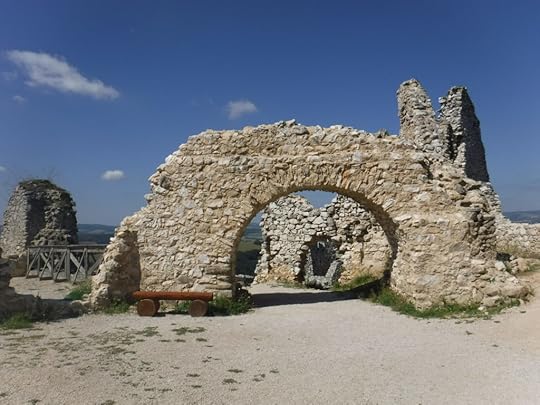
The most famous occupant of the castle was the Hungarian Countess Elizabeth Báthory, who, along with her husband Ferenc Nádasdy, owned a great deal of property in 16th-17th century Hungary. The castle was a wedding gift to Elizabeth from Ferenc. Elizabeth Báthory is perhaps best known as the most prolific female serial killer, having been accused of murdering hundreds of girls. Tales of her bathing in their blood became a part of local legend, and she is often now compared to Vlad the Impaler.
Although she was found guilty, due to the political implications of executing a powerful and influential noble, Elizabeth was placed under house arrest in Čachtický hrad, in sealed rooms with only slots through which food could be passed. It was not readily apparent from the ruin which rooms had been hers, but it wasn’t hard to imagine that, at night, her ghost could appear and wander amongst the stones.
After the castle, I ventured north to find my hotel. An originally unplanned turn of events led to an amazing discovery: the resort town of Terchová and the legend of Juraj Jánošík.
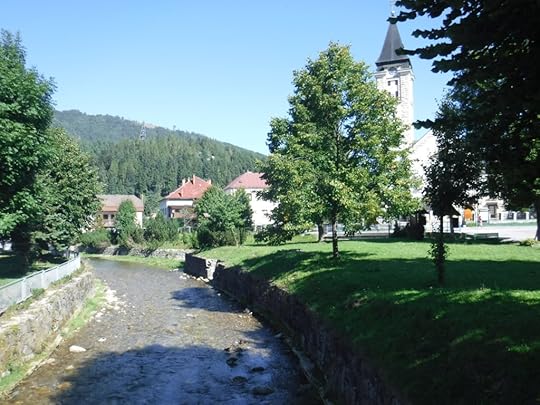
Downtown Terchová
I booked my hotel room last-minute so I had no idea what to expect. After driving through a series of beautiful Slovakian towns, I came to this gem of a resort town. My hotel is a ski resort in winter, within walking distance of the slopes. For the first time on my trip, I felt absolutely elated.

Juraj Jánošík overlooking his birthplace of Terchová
I wandered down from my hotel for dinner to find a restaurant and ordered the special: deer ghoulash. It was as amazing as it sounds. Then I settled in for a long, much-overdue sleep.
The next day I explored the town and discovered the legend of the folk hero Juraj Jánošík at the local museum. The museum included a historic description of Juraj’s life (in English) and an artistic short film about his legend (in Slovak).

Juraj was born in Terchová and joined the anti-Habsburg rebels at the age of fifteen, in the late seventeenth century. After the insurgents lost, he joined the Habsburg army. However, during his posting as a prison guard, he met a prisoner named Tomáš Uhorčík and helped him escape. Together they formed a band of highwaymen.
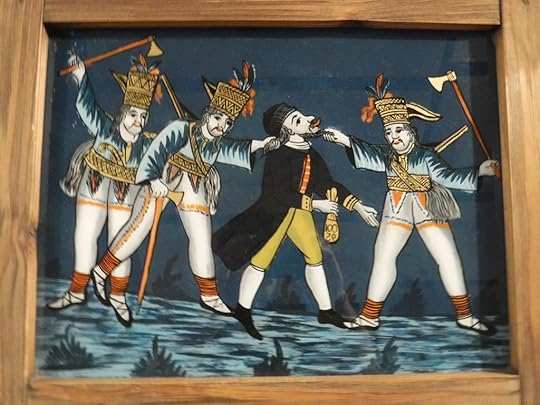
Juraj and his highwaymen robbing a merchant
When Tomáš retired to marry, Juraj became the captain of the band. He became something of a Slovakian Robin Hood, reportedly robbing from the rich to give to the poor. His band never killed their targets, either — they simply robbed them and let them leave.
Juraj was eventually captured and executed, reportedly jumping on a hook after performing a traditional dance in a William Wallace-esque expression of freedom. His tale passed into local legend, though this legend has a basis in verifiable history, since there are records of Juraj’s birth and death. He has been immortalized in poetry, song and film innumerable times, and my life is richer for having encountered his story.

Slovak folk instruments
The museum also included an exhibit detailing traditional life in the region. I would have paid several times the entry fee (2 euros!) for the enriching experience.
Tomorrow: my visit to the (paternal) ancestral homeland.
Brno, Bratislava, and Borders
Although Brno’s downtown is picturesque and historic, it’s also bustling with ordinary (non-touristy) activity. I ordered an espresso from a café and people-watched urban professionals, young families, and university students going about their business. Not a lot of tourists.
My first destination was: you guessed it, another ossuary. One may accuse me of being morbid, but there are a couple of reasons for my visit. First and foremost, it was mere steps away from my hostel. While the Sv. Jakuba (St. James) ossuary was still semi-decorative, it was set up as something of a small museum, providing me with historical context so that I didn’t have to rely on Wikipedia. The ossuary is also located in the very heart of town. Since the entire burial site had been forgotten about until 2001, the history of its restoration (without disturbing the surrounding streets and buildings) was fascinating.

The steps on the other side of this monument lead down to the ossuary
Within, I learned about not only the history of the church and graveyard, but also about Catholic burial traditions, in general. Fun fact: deaths from suicide or the unbaptised still had to be buried within the cemetery, but it was sacrosanct to pass those bodies through the gate, so they were thrown unceremoniously over the wall.
The ossuary exhibit was deliberately creepy. Dark catacombs summoned to mind a scene from an Indiana Jones film, accompanied by spooky but beautiful music by a Czech composer. It was cool and dank, and in more than one place groundwater was seeping through the mortar.
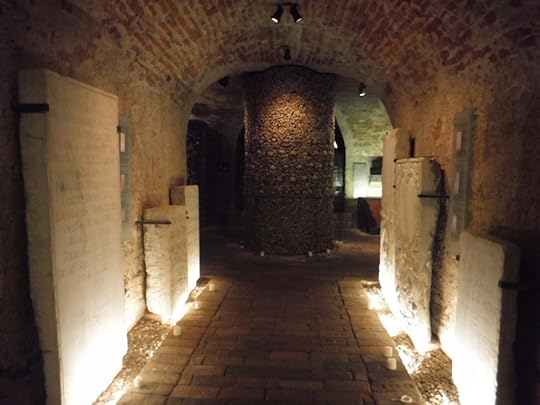
Mausoleum inscriptions line the hallway
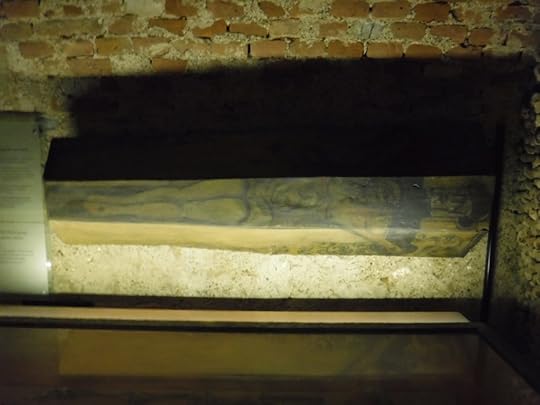
A child’s coffin
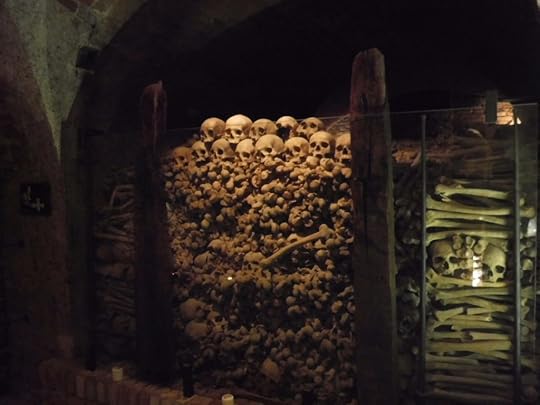
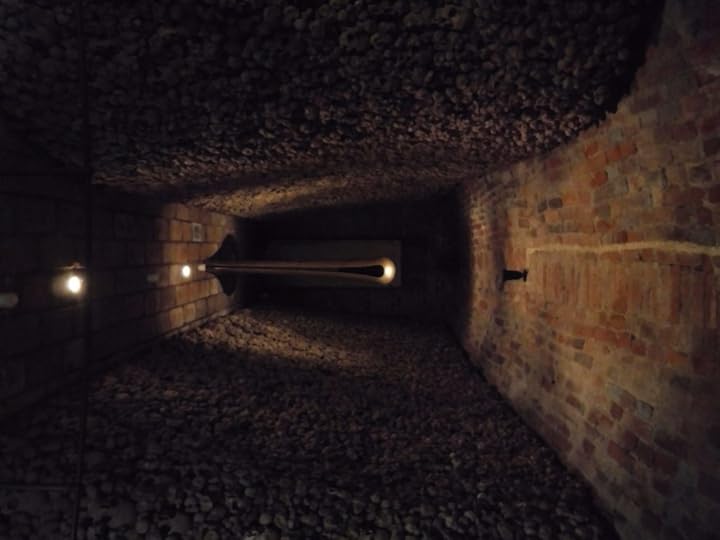
Artful sculptures provide focal points for the space
Having had not quite enough of bones, I made plans to see the bones of a castle on my way up to Trstená. My next stop in Brno, however, was the monastery where Gregor Mendel carried out his groundbreaking work on genetics.
It was about a half-hour walk to the abbey from the historic core, and the entrance was so tiny that I passed right by it (also confused by the restoration work going on) and walked around the entire grounds before finding my way in.
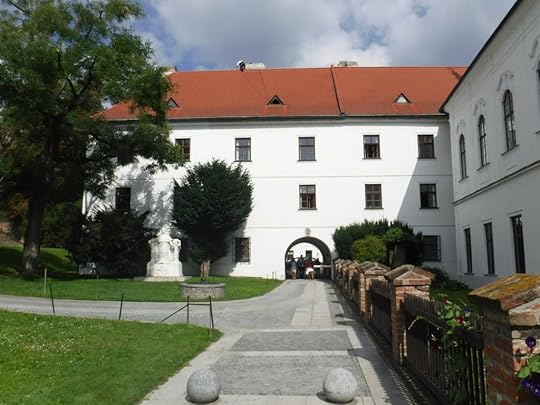
The abbey where Gregor Mendel lived and worked
Most of the abbey is now filled with medical and professional offices, though there are still a few exterior plaques that talk about Mendel’s work. The entrance to the museum was through the ‘Mendel Cafe’ so I almost missed it.
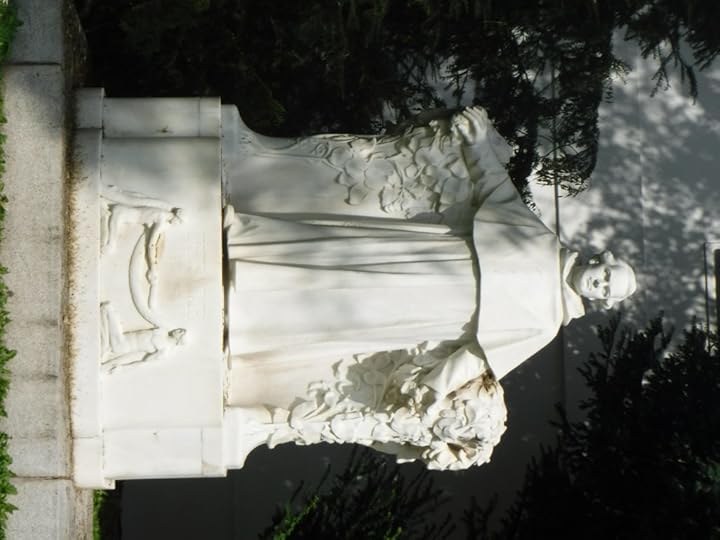
A statue commemorating Mendel
What the museum lacked in size, it more than made up for in use of space. Glass exhibits containing Mendel’s tools, notes, and other relics filled the rooms, as well as some really high-tech screens displaying visually stunning videos about genetics. The couches were also made in super cute little X and Y shapes.
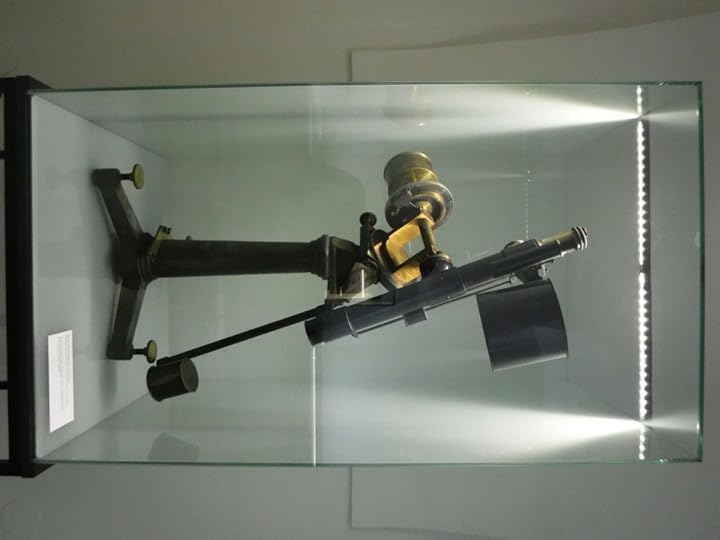
Mendel’s telescope
I made friends with Lenča, one of the employees at the museum, who is studying genetics and gave me some great insight into Mendel. We also chatted about travelling and I promised to get her some recommendations for what to do in Washington, D.C. from my friend Charlotte. Knocked two goals off my list: made a Czech friend, and got the warm fuzzies from feeling like a part of a global community.
My next stop was Bratislava, the capital of Slovakia. In order to cross the border, I not only had to pay a surcharge to the rental company, I also had to buy a 10-day pass at the border. It’s all done electronically by licence plate, however. No border guards, no searches, just a fee and the magic of the Eurozone.
Bratislava was only a two-hour drive from Brno. I arrived at the Hostel Possonium (you have to go up on the curb to park) and was greeted by a friendly and engaging receptionist who gave me some excellent recommendations for both Bratislava and the rest of Slovakia.
Then I was greeted by fellow travellers, kittens (sorry, no pictures! I was overwhelmed and tired by that point) and a shot of Borovička (made from juniper, like gin).
This was my first real hostel experience (the other two were nearly vacant), and I’d have to say that it isn’t for everyone. For the extrovert who wants to make connections, the seasoned traveller who doesn’t mind sharing a room with seven to nine other people, or the person who will sacrifice privacy to save 2/3 of their money, hostels are a great choice.
I met people from all over: Sao Paulo, Sheffield, Lyons, Barcelona, Canberra, New Zealand, Finland, and even a honeymooning couple from Edmonton. The highlight, however, was that there was a bar within the hostel. I stayed up until three with Ingmar, the bartender, discussing music, literature, and travel. Wish I had asked for his contact info. If you read this, Ingmar, leave a comment!
Tomorrow: Getaways and Legends
August 23, 2016
Bones, Barbora, Brief History Lesson
I began my day with a stroll back to my car through Plzen’s historic downtown, stopping at a bakery for an espresso and an open-faced sandwich. I asked one of the girls how to say ‘thank you’ in Czech. “Děkuji” (sounds like yah-koy-oh to my untrained ear).
The Czech countryside is beautiful, and my trip took me on a winding tour through two-lane (one each way) roads and tiny villages. I am so thankful for the experience — the long wait times through construction zones didn’t bother me in the slightest (I also have my girlfriend Aimee’s playlists to thank for that). Many towns are within walking distance from each other, and each one features a beautiful church, often along with another historical site such as a monastery or fortress.
My destination was the Sedlec Ossuary, but I wound up discovering quite a bit more of interest in the tiny (20k pop.) city of Kutná Hora than I expected, which brought me to Brno later than my original plan. I was happy to experience the diversion.
As the history goes, an abbot from the Cistercian monastery in Sedlec (walking distance to Kutná Hora) brought back soil from Golgotha to the abbey’s cemetery, and it rapidly became a desirable burial spot. The number of bones at the site became quite remarkable after the plagues of the 14th century, followed by the 15th century Hussite Wars (a Bohemian rebellion against the Catholic church). It is estimated that between 40 and 70 thousand people’s bones are contained within the ossuary. A half-blind monk was tasked with exhuming and stacking the bones. Legend claims he regained his sight once he had completed the work.
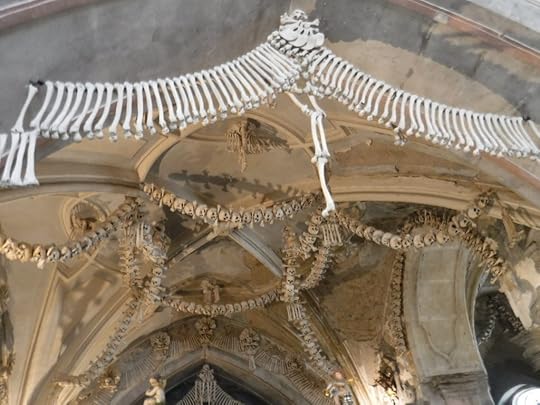
H.R. Giger would have loved this place
While it could be considered morbid, the inspiration for stacking the bones is actually theological: “all are equal in the sight of God”. Worship and faith, I am reminded, are often about the idea of transcending death. While the ossuary for me was more of a history lesson, I was still compelled to use the font and light a candle. My Catholic habits live on, it seems.
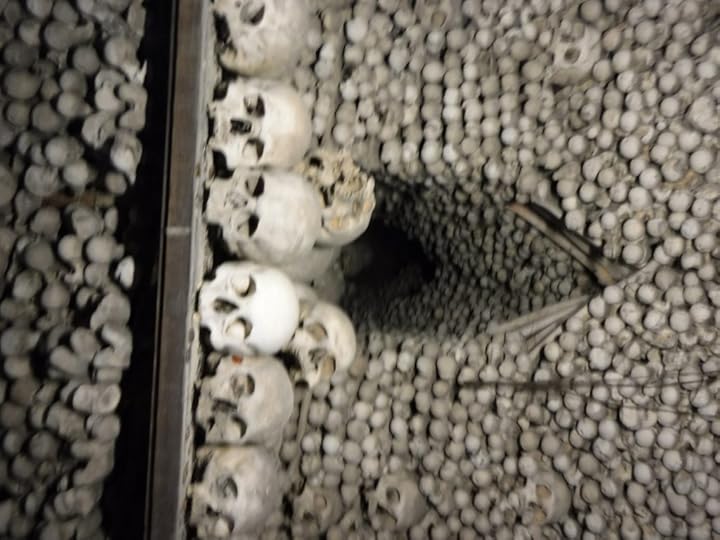
Whole lotta bones
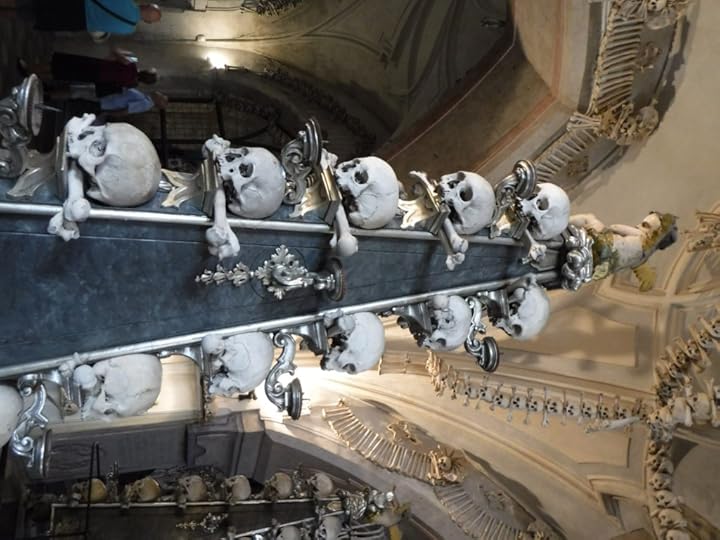
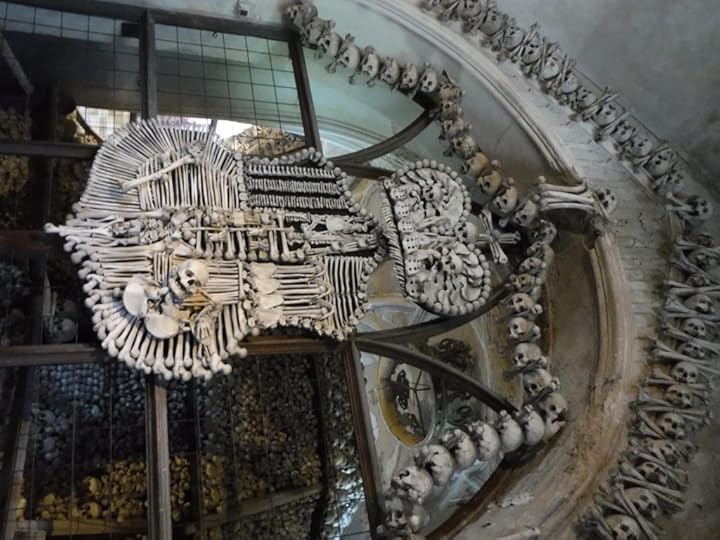
The House of Schwarzenburg coat of arms, made from the dead
From the ossuary, I happened upon a Philip Morris factory, complete with an interesting (and free) museum exhibit.
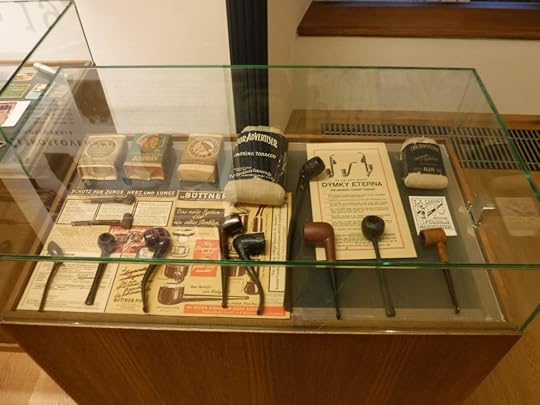
Tobacco as it was used in the 1920s
After exiting the museum, a young down-on-his luck Czech man asked to use my phone. For the price of a beer, he offered to walk me to the historic downtown centre. I took him up on his offer and wound up discovering the wealth of visual and historical wonders that Kutná Hora had to offer. Two woundrous cathedrals and a Jesuit university later, my camera’s battery finally called it a day.
Downtown Kutná Hora had a different feel to it than Plzeň, mainly due to the fact that the original site of Plzeň is about 10km away from today’s Baroque-style “downtown Plzeň”. Kutná Hora featured winding, narrow, sloping cobblestone streets and a ridiculously skewed tourist-to-local ratio.
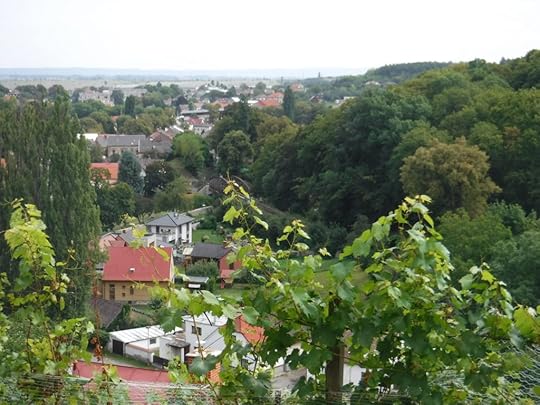
The view from the Church of St. Barbara
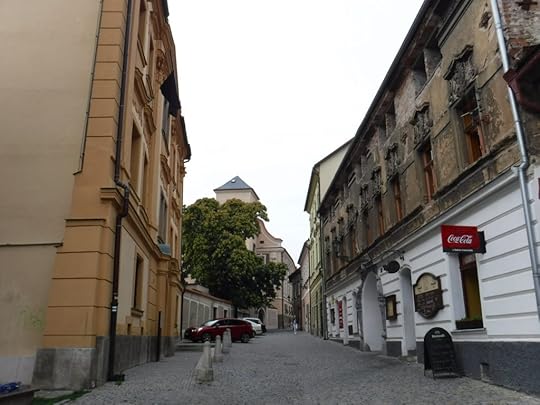
Downtown Kutna Hora
The cathedrals were breathtaking (I’m sure I will stop saying that after the 5th one I visit). The first one I entered was Kostel sv. Jakuba (Cathedral of St. Jacob), a by-donation lookie-lew which, while it was less outwardly impressive as the stately Gothic wonder that is the Chrám Sv. Barbory (Church of St. Barbara), still had a lot to offer:
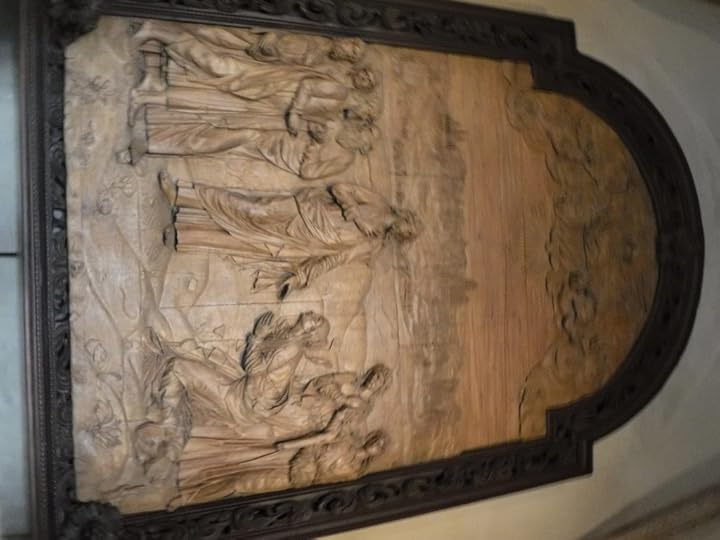
Jesus and apostles carved in wood
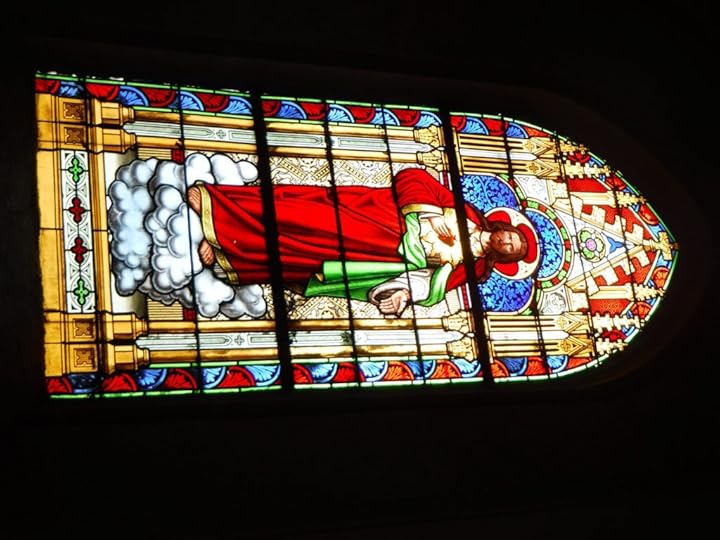
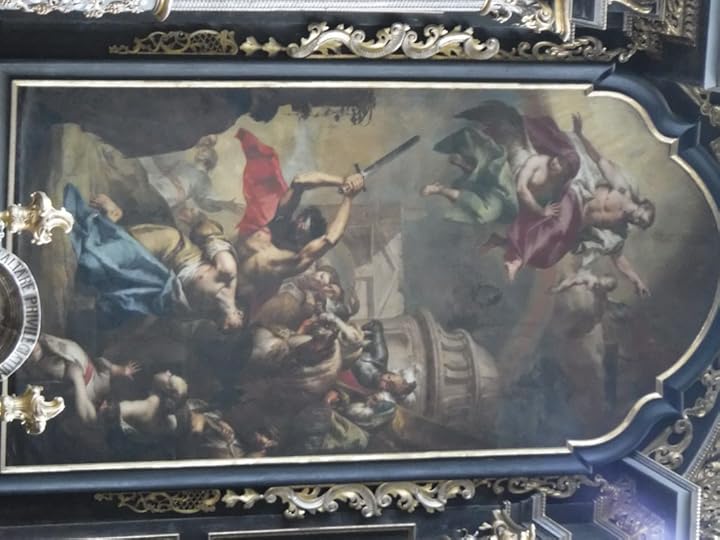
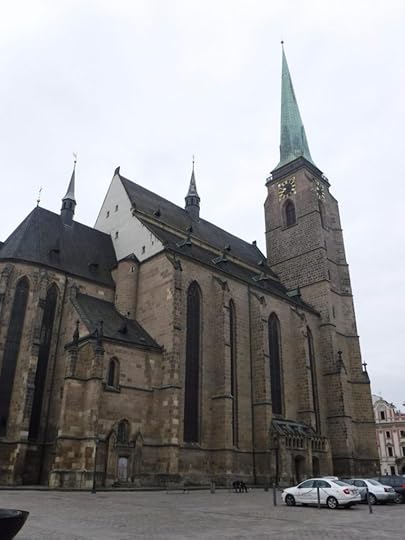
The Church of St. Barbara, however, was even more of a sight to behold. Built on money that came from Kutná Hora’s lucrative silver mine, it was definitely worth the price of entry and my guide Matěj’s beer.
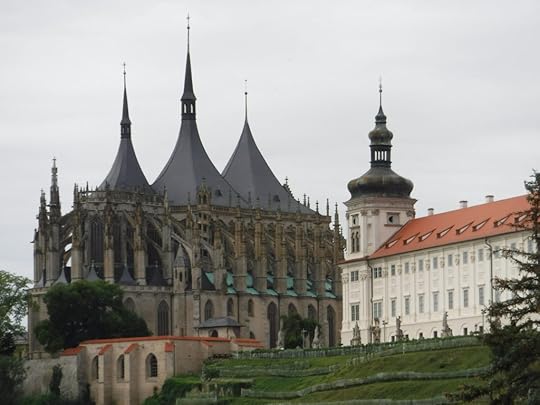
The church from afar, with the Jesuit college on the right
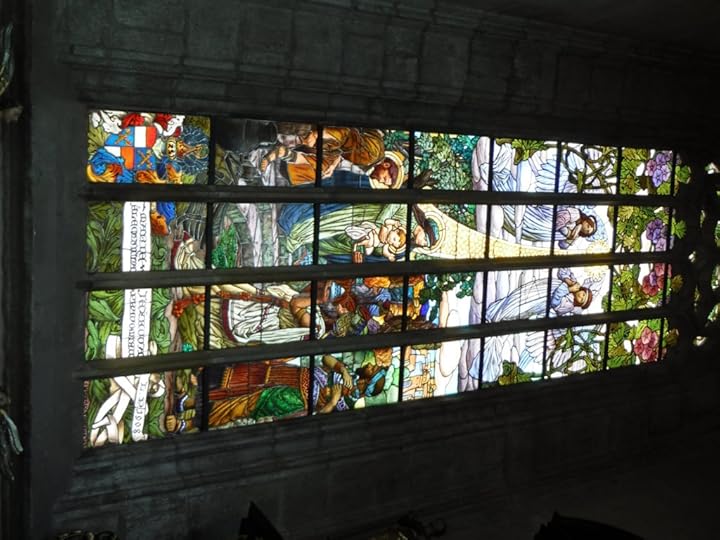

Czech lands in winter
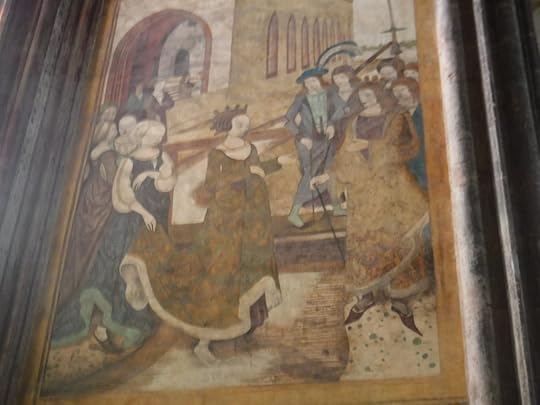
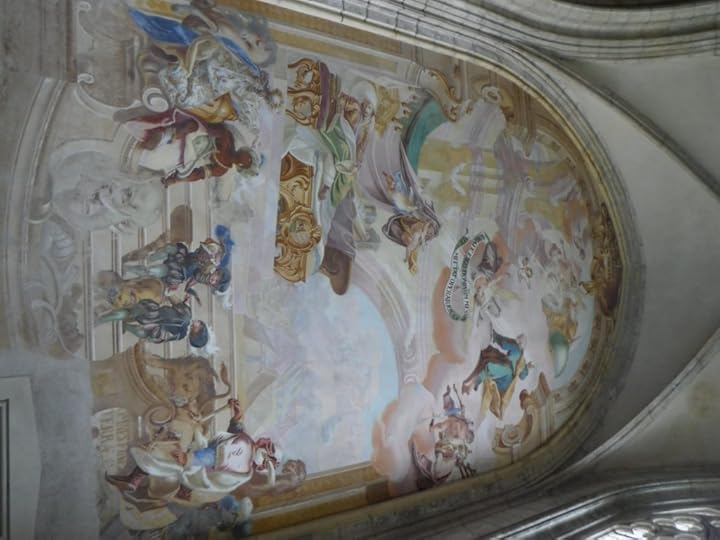
A middle-eastern themed mural
Meals today were both “traditional” fare – a Bohemian medley of beef, sausage, pickled cabbage and dumplings, and a Moravian dish of braised beef in a cranberry gravy with soft bread on the side. Pilsner on the side.
Tomorrow: Brno and the groundbreaking work of Gregor Mendel.
August 22, 2016
Plzen and Pilsner Urquell
I landed in Prague at about 7:00 A.M local time and got my things together for the drive to Plzen. My rental is a Skoda; they’re manufactured locally. It’s a zippy little compact. Fun fact: European models have an auto-shutoff feature if you idle for too long. That was a bit of a shock the first time it happened to me while waiting at a stoplight.
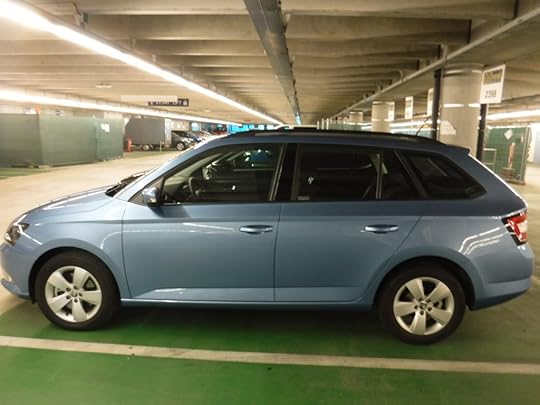
My companion for the week
While I was told that driving in Italy would be a harrowing experience best avoided, I can see how driving in the Czech Republic could be viewed the same way. Although the posted limit is 100 kph on the highway, the generally accepted standard is around 130. Many will push this to around 150, tailgating ever so slightly if you’re going too slow in the fast lane (it’s illegal to pass on the right). Still, drivers here are generally very safe, using their signal lights and for the most part reminding me how bad drivers in Vancouver can be.
The Czech countryside is downright picturesque (no copilot = no photos of this, sorry). Rolling hills, forests and farmland are punctuated by red-roofed towns that border the local rivers. In towns, clusters of Soviet-era concrete housing surround the original Baroque-style villages. Gothic and medieval styles survive in many of the cathedrals and castles.
I would describe Plzen’s old town as ‘cute’. It’s little, with Baroque row-style buildings and cobblestone streets. Its crown jewel is St. Bartholomew’s Cathedral, which dominates the space at the centre of a massive town square.
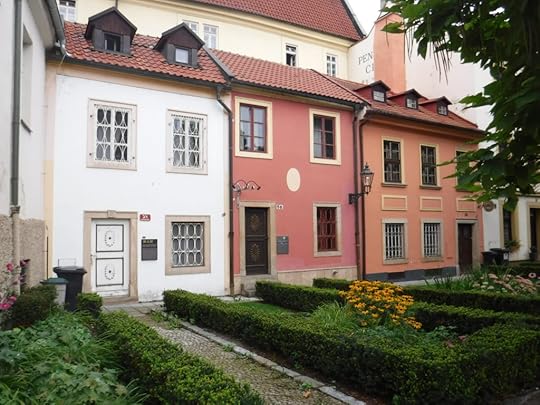
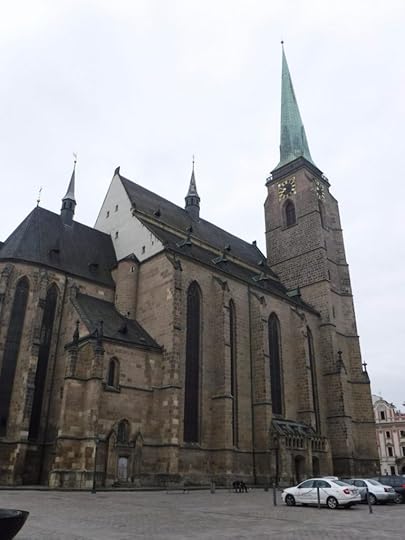
The interior of St. Bartholomew’s is predictably Gothic: sombre, with beautiful altarpieces and stained-glass windows. Most of the interior was not open to the public but I witnessed many worshippers coming in to make the sign of the cross at the fonts, and pray to Mary at one of the lobby’s side-altars (not sure what the technical term is there — the internet suggests narthex but that sounds too technical).
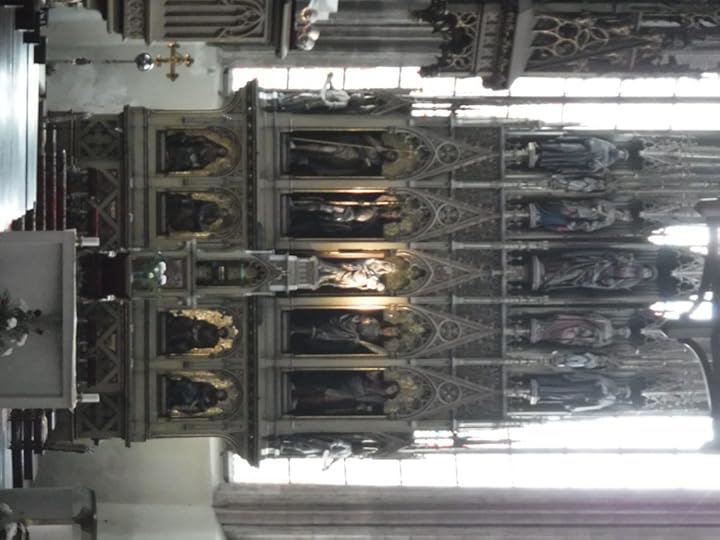
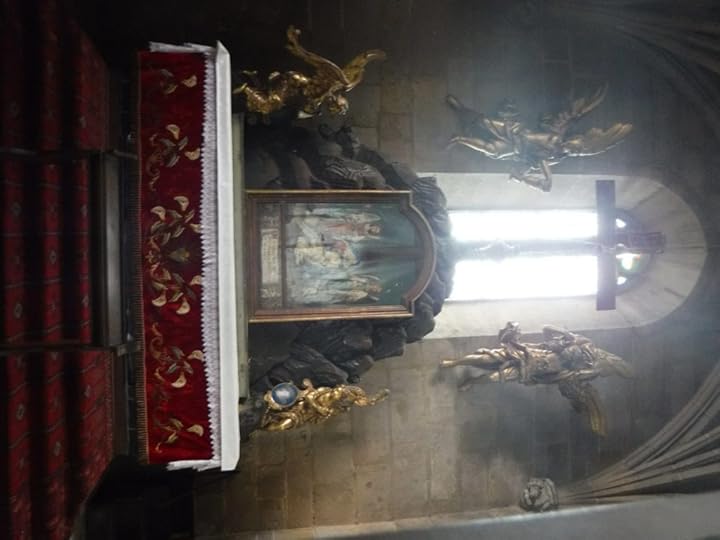
The best part about visiting St. Bartholomew’s, however, is paying the 50 KR. (approx. $2.5 CDN) to ascend the (very steep) tower steps all the way to the top. The view of the city and surrounding countryside was excellent:
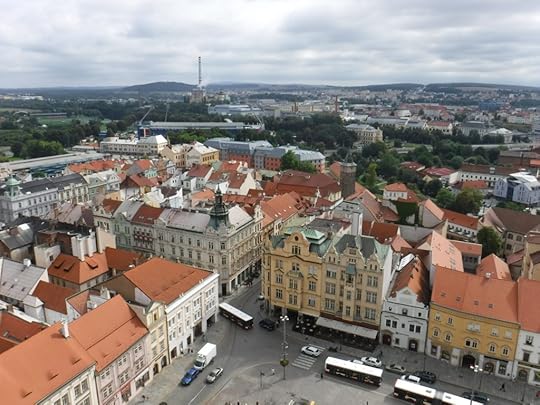
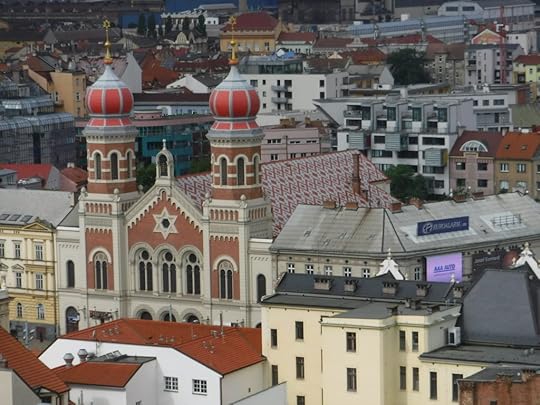
The Jewish Synagogue, third-largest in the world
From St. Bartholomew’s I crossed the river to find the Pilsner-Urquell brewery. The gate to the brewery, constructed for its 50th anniversary, greets you to the spacious brewery grounds:
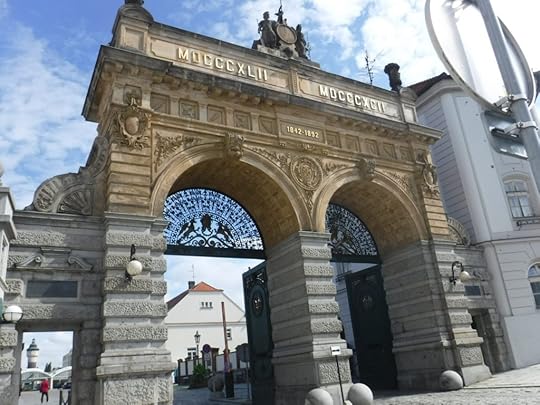
The brewery tour was excellent and I would highly recommend it. The cost was 200 kr. (about $10 CDN), which included a lengthy tour of all facilities (except administration) and a free tasting of an unfiltered, unpasteurized “12” (hoppier than their standard pilsner) straight from the barrel. The highlight of the tour for me was getting to see a glimpse of the extensive network of tunnels (9 km. in total) excavated underneath the brewery grounds for the sole purpose of barrel storage – it almost had the look and feel of a military bunker.


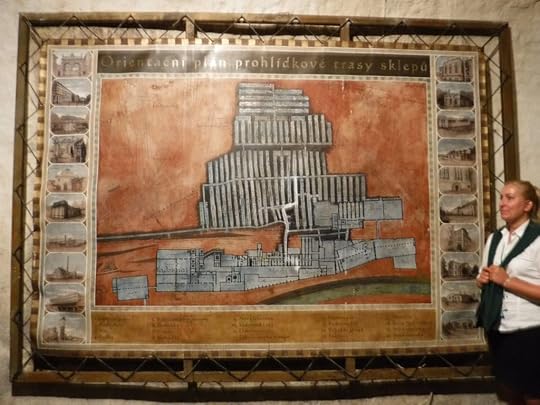
Our guide shows us a map of the tunnels.
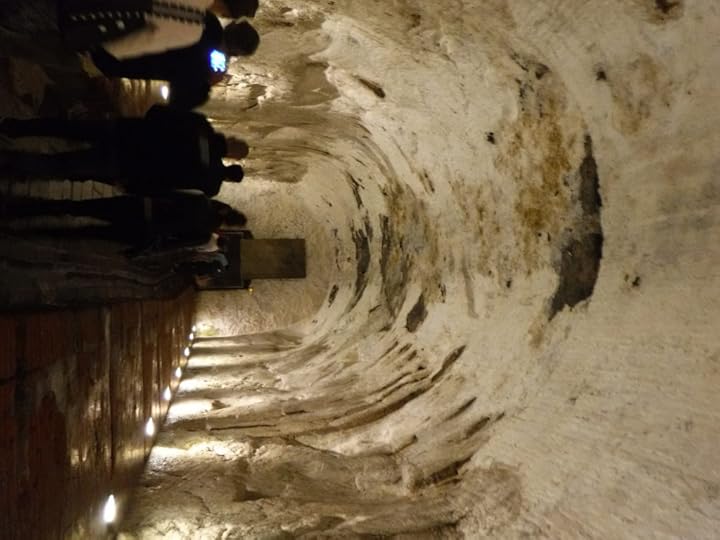
The tunnels
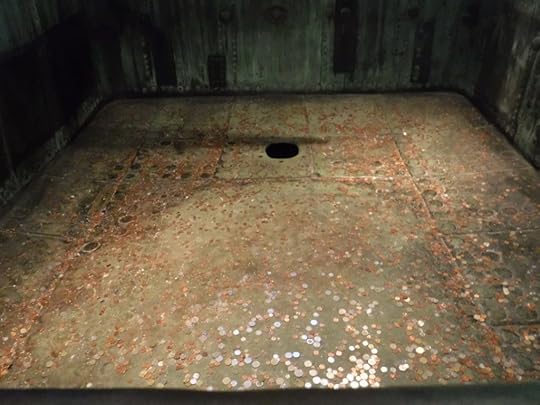
Legends say that, if you throw a coin into the original brewing vat and it lands in the hole, your girlfriend or wife will become pregnant within the year. I decided not to tempt fate…
Tomorrow: Monasteries and Ossuaries
Skates and Shoes, or Toronto in Twelve
My journey began with a twelve-hour layover in Toronto.
Well, technically it began with toasting Gord Downie at the Flying Beaver. Details.
In order to combat jetlag, my plan was to stay awake during the red-eye and sleep on the flight to Prague in order to awaken bright-eyed and bushy-tailed for Europe time (nine hours ahead of my norm). This works in theory. We’ll get to that.
This was my first visit to Toronto, but I knew I wouldn’t have time to take in many sights. However, I didn’t relish the idea of killing twelve hours in the airport, so I hopped the express to downtown. It’s a bit pricy at $12 each way, but it gets you there in less than half an hour and drops you right on Yonge Street.
I don’t often go in for the usual “blockbuster” attractions, so the CN Tower wasn’t high on my list. However, I figured that, along with catching the CBC broadcast of The Tragically Hip’s farewell show in Kingston, the most quintessentially Canadian thing I could possibly do before leaving Canada would be to check out the Hockey Hall of Fame.

A hitch appeared in the form of massive foot pain from my arches dropping, so I ditched by sandals for a good pair of runners. With all the walking I’ll be doing on this trip, my feet will thank me. Luckily The Running Room was open!
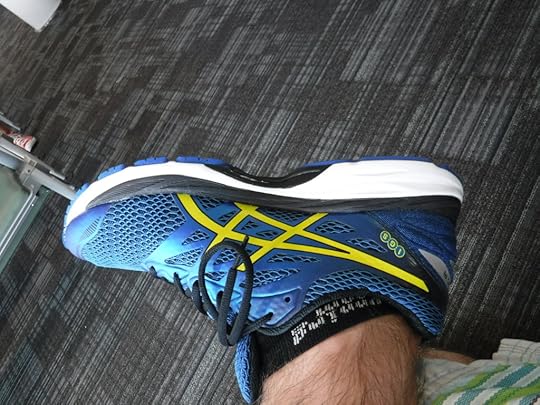
I bet you could walk all day in shoes like that and not feel a thing.
The Hockey Hall of Fame is exactly what you’d expect, plus some neat bonuses in the form of interactive games. Jerseys and equipment displays range from the NHL to Olympic teams to minor leagues, going all the way back to the game’s inception. There is a gritty feel to the older jerseys — you can see the soaked-in sweat and blood stains. Upstairs houses the trophies themselves, including The Stanley Cup. Yes, I got to touch it. I’m not a crazy hockey fan, per se, but it was thrilling to touch something that so many hockey greats see as their holy grail.
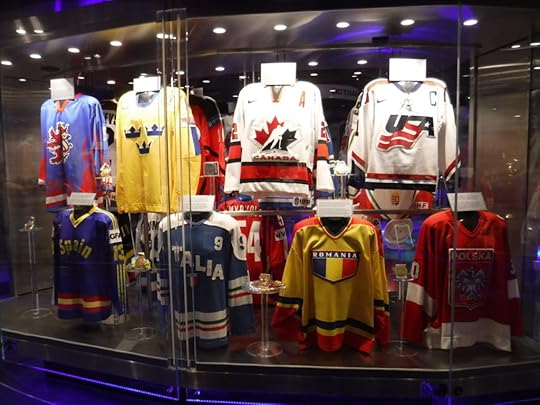
A ramen place, Ajisen, was recommended to me for lunch, about a half hour walk from the Hockey Hall of Fame. I was delighted to find that on Sundays they close the roads around the Kensington Market. Street food and free shows were everywhere. I was lucky enough to see an old Chinese man playing the erhu and telling a tale (in Mandarin) about a dragon.
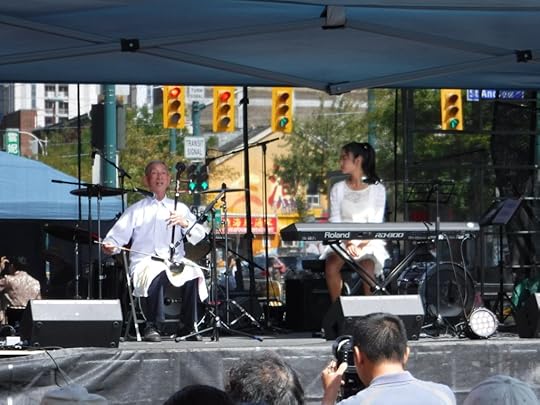
Love me some erhu
The ramen was delicious, spicy, and reasonably priced. Well worth the walk.
On my flight, I was lucky enough to be seated beside a Czech woman returning home. She gave me some good recommendations which might alter tomorrow’s itinerary.
The flight was only moderately bumpy, but it was turbulent enough that I didn’t manage to get a lot of uninterrupted sleep. So much for the jetlag plan.
Coming up next: Plzen
August 9, 2016
Backburners and Backpacking
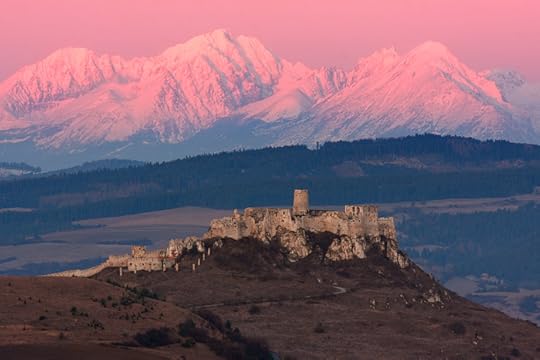
As you may recall, I like to write stories now and again. However, many of my fiction projects have been put on the back burner due to an increased focus on a job I love, a diploma I’m pursuing, and a novel I’m publishing.
Happily, my predilection for writing extends to travel blogging, so there is an outlet available, as well as an efficient way to share my experiences with my friends, family, fans, and random strangers. So I present to you…
“Backpacking Through Europe: A 20-Something’s Dream Come True.”
Too bad I’m 32. Still, better late than never. I’ve no intention of becoming the next Rick Steeves, but you can still look forward to an anecdote, amateurish photograph or awe-inspiring snippet of history here on this blog as I travel.
~*~*~*The Itinerary*~*~*~
Disclaimer – Subject to change due to:
Time constraints
Budget constraints
Crisis Alerts
Whim
Vancouver to Toronto. A bargain red-eye from one Greater Metro to another. Full day’s wait for flight #2 means stops at the Royal Ontario Museum and possibly the Hockey Hall of Fame (because Canada). Recommended lunch spot: Ramen joint.
Tee-dot (do the kids still say that?) to Prague. This will be the longest flight I’ve ever experienced; I don’t expect to have fingernails by the time we land but I do hope to get some writing done! Barriers include: horrible tiredness, me being too chatty.
Prague to Plzen. August is busy season for Prague, so I’m renting a car and getting the hell out of dodge. Stops include the world-famous Pilsner Urquell brewery and lots of bedrest to mitigate jetlag.
Plzen to Brno. My plan is to enjoy the beautiful Bohemian / Moravian countryside, take some roadside photos, check out some castle ruins and maybe a creepy ossuary (I want to call it an ossoleum). In the environs of Brno is the Augustinian monastery where Gregor Mendel did his work on genetics.
Brno to Bratislava. While I will be in-between several interesting festivals (notably the Coronation Ceremony), there is a Museum of Weapons and Fortifications where I can geek out.
Bratislava to Martin. On the way I might visit the (ruined) castle where Elizabeth Bathory was imprisoned following her trial. Martin was the seat of Slovakian culture in the 19th century, and still contains the Slovak National Museum.
Martin to Trstena and area. This is the region of Slovakia from which my patrilineage hails. Highlights include the Tatras Mountains, possible meet-ups with extended-extended family, and hikes to overrun graveyards.
Trstena to Spisske Podhradie. I’m here to see the castle.
Back to Prague. Returning to the Big City after the end of peak season to enjoy Art Nouveau, astronomical clocks, and really big bridges.
Prague to Venice. Cheap European flight to Marco Polo airport, seabus to Venice, and Vivaldi in my head for two days straight. My hostel will likely be a converted grain warehouse. Highlights include sipping on a $12 coffee, enjoying a chamber orchestra in St. Mark’s Square while ankle-deep in water. I’ve been told the Doge’s Palace is quite the tour.
Venice to Rome by train.
Rome. Churches upon churches upon churches upon temples to Mithras. Evasive manoeuvres in the Colosseum / Pantheon area. Gazing upon the Vatican from afar.
Rome to Florence. Galileo and Da Vinci worship. Wine tour. The countryside.
Florence to Cinque Terre. Chillaxing and breathing in the Mediterranean (sorry Aunt Sue — no time for the Amalfi Coast, but the colourful seaside houses look great!)
Cinque Terre to Milan. Relaxing and (if I haven’t done so already) some fine dining.
Milan to Frankfurt (in Germany for two hours, wooo!) to home.
I fully expect to be derailed at some point, but I tend to look forward to the unexpected delights that flexibility can offer. In the end, I consider my travel goals to be fourfold (yes, it’s a word!):
Experience the adventure
Get in touch with my Slavic roots
Research and inspiration for the Crystal series
Learn me some history
Wish me luck, and please follow this blog if you’d like to experience my travels vicariously. Apologies for all the bullet points. When you work in an office long enough it’s a subconscious process.
–James Funfer



